![]()
| A trip into the Exclusion Zone |
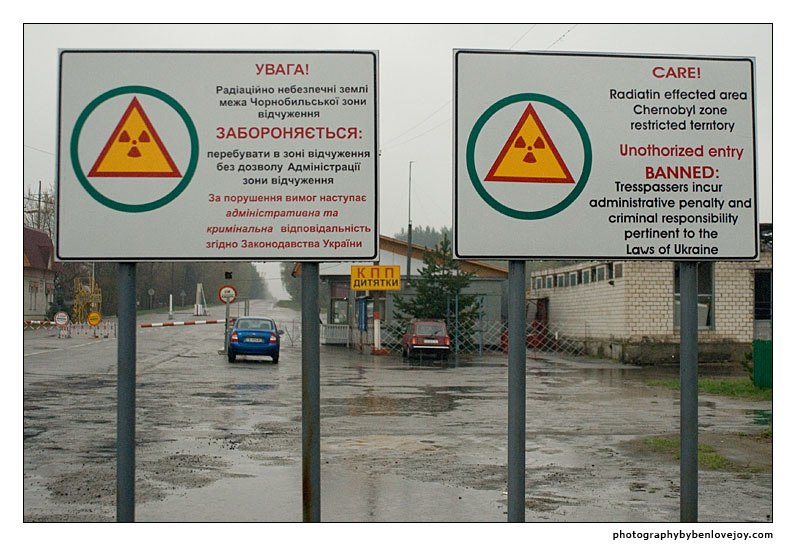
|
The Chernobyl Exclusion Zone is the area which was evacuated after the disaster. Entry requires a government permit, and exit requires a full body scan to show that your radiation dose is within the allowable limits. |
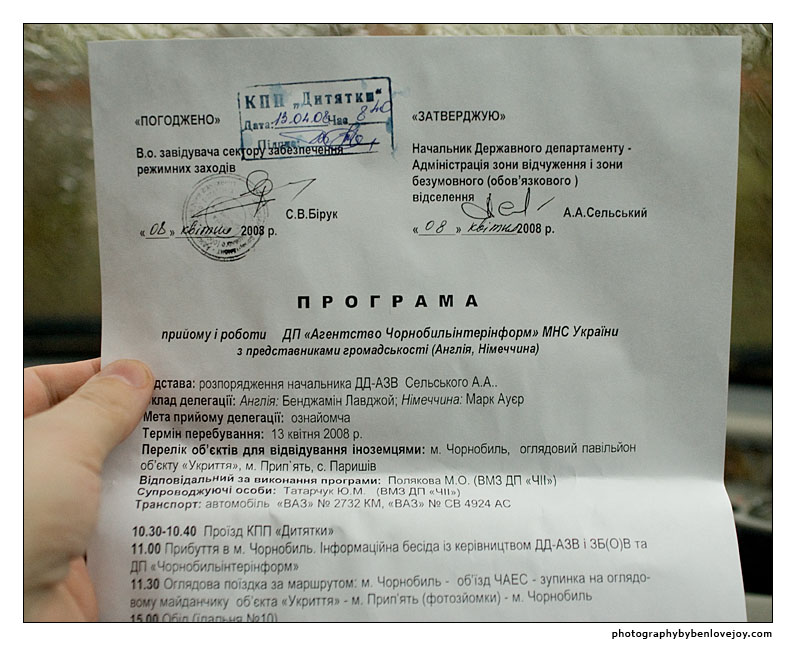
|
You can see below the GPS tracklog of our visit. The yellow line is the tracklog of our journey from Kiev (just off the map at the bottom) to the Zone, and the four points marked are waypoints I captured on the trip. The Exclusion Zone is 30km in radius, and is represented by the shaded area. The grey line is the border between the Ukraine and Belarus. You can see that a very large part of the Zone, and thus the contamination, is actually within Belarus: |
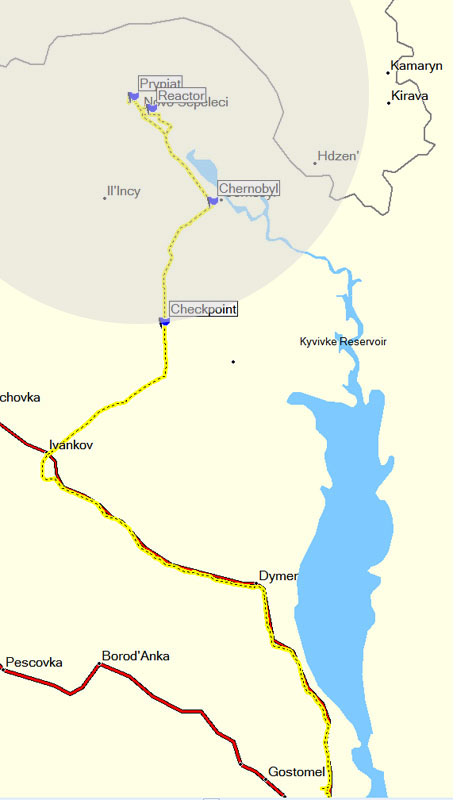
|
There are tour companies who arrange visits into the Zone. They obtain the permits and organise an authorised Chernobyl worker to act as guide. The guide is responsible for your safety, and you need to pay close attention to their instructions on where you can and cannot go: the radiation levels within the Zone vary tremendously. The first place you visit after entering the Zone is Chernobyl itself. I ask Yuri, our guide, to stop the car so that I could photograph the town sign. He says I would be better to stand the other side and photograph the exit sign: "Chernobyl no more." |
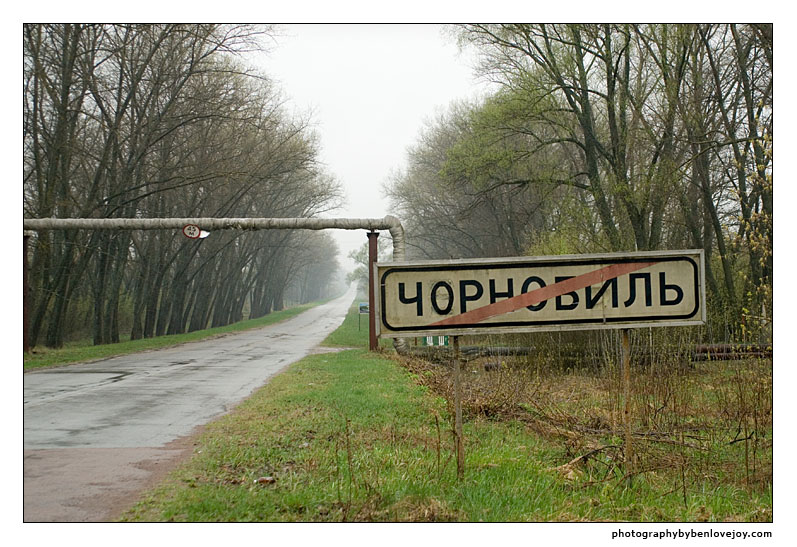
|
Driving through Chernobyl is a strange experience, as there are people walking down the streets. Not many people, true, but it could still pass for an ordinary town on a very quiet Sunday. The reason is the relatively large numbers of people involved in the administration of the ongoing clean-up operation. Chernobyl is still some distance from the reactor site, so it is safe for people to work on a 15-days-on, 15-days-off schedule. The 15 days off must be spent outside the Zone. For those who skipped the radiation page, correspondence with a nuclear physicist revealed that the cheap geiger-counter was under-reading by a factor of five, so I show the meter reading then the corrected reading (then the comparison with London). Radiation levels here are surprisingly low - a reading at the government offices in Chernobyl showed just 0.12 = 0.6uSv/hr (x1.7 London). |
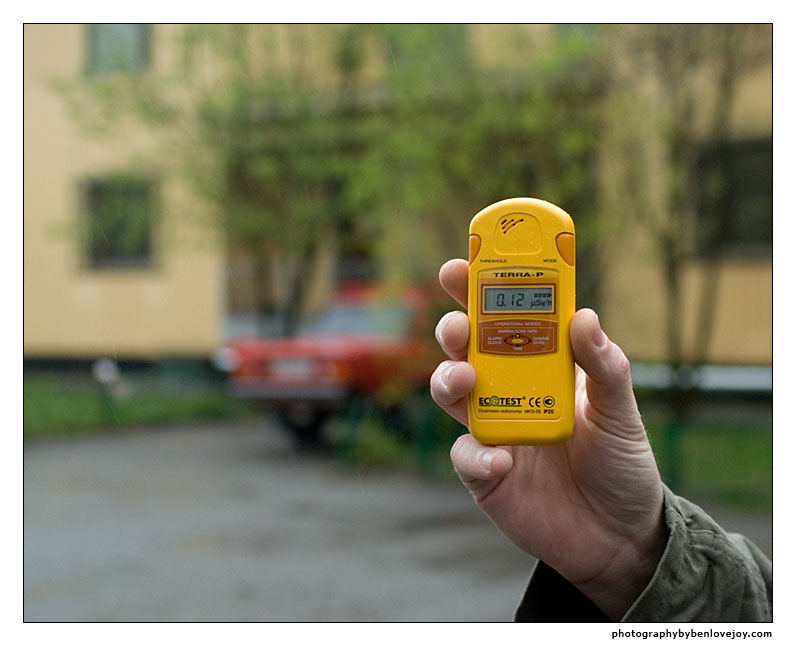
|
The real danger is drinking contaminated water and eating contaminated food: caesium is absorbed by the internal organs, and strontium by the bones. It then continues to expose the body to radiation poisoning internally. We stop at Chernobyl fire station to see the monument to the firemen who lost their lives. This is an unusual monument in that it was designed, built and funded not by the government but by the surviving firemen: |
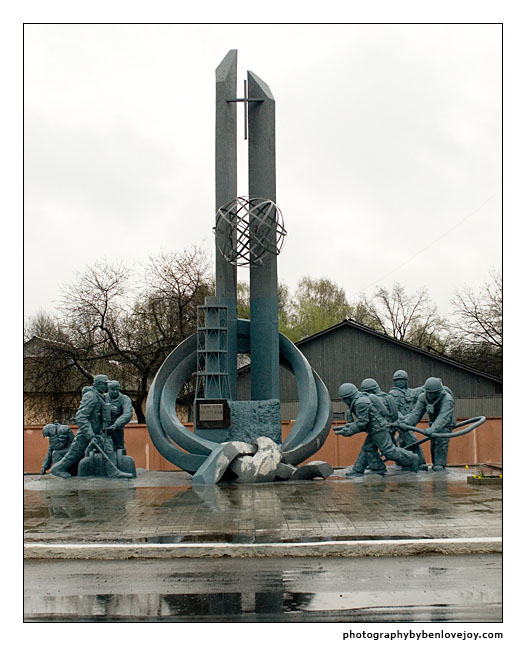
|
Our next stop, though not leaving the car, is at one of the buried villages. In the immediate aftermath of the disaster, the then Soviet government thought that the best way to prevent the spread of radiation from the villages closest to the reactor site was to demolish all the buildings and bury the rubble under mounds of earth: |
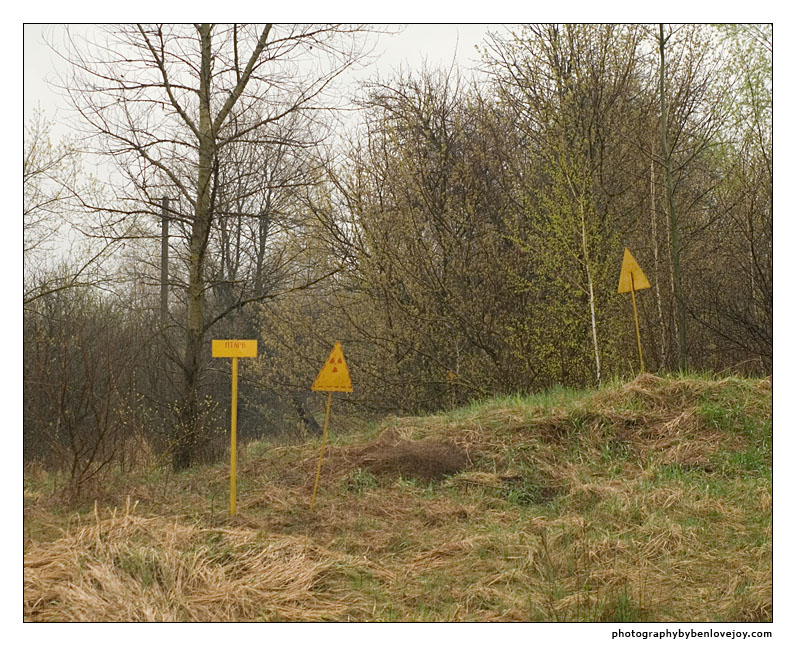
|
This practice was quickly ended after it was realised that this was the worst possible thing to do: as rainwater seeped through the soil, it became highly radioactive, creating radioactive groundwater which then fed into streams, wells, etc. This greatly increased the range and level of the contamination. I'm monitoring the geiger-counter on the drive deeper and deeper into the Exclusion Zone. It is climbing extremely rapidly now. As we pass the buried village and head towards the nuclear plant, it is reading 3.99 = 20uSv/hr (x57 London). |
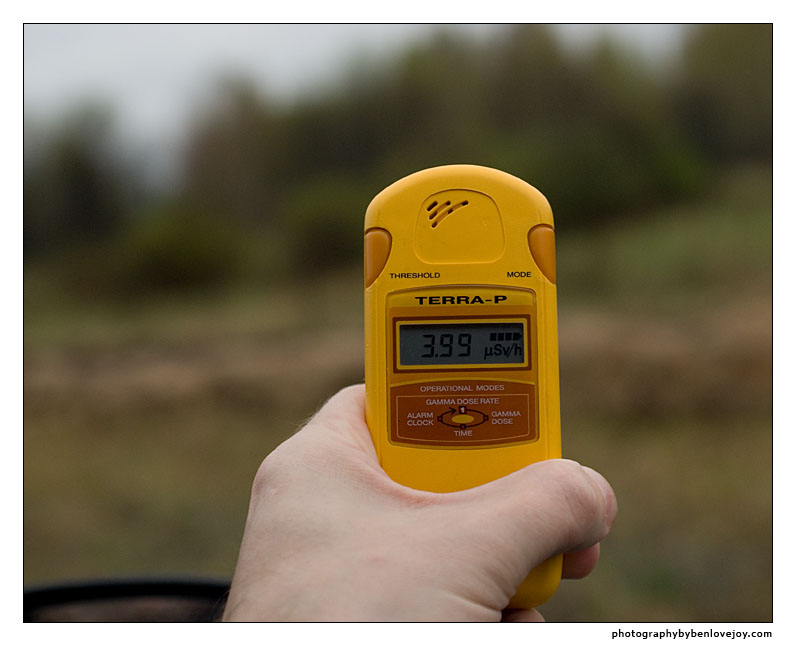
|
The first reactors we reach are 5 & 6. These were in the process of being constructed at the time of the accident. Construction was, of course, never completed, and the half-built reactors still have the cranes in place, far too radioactive ever to be removed: |
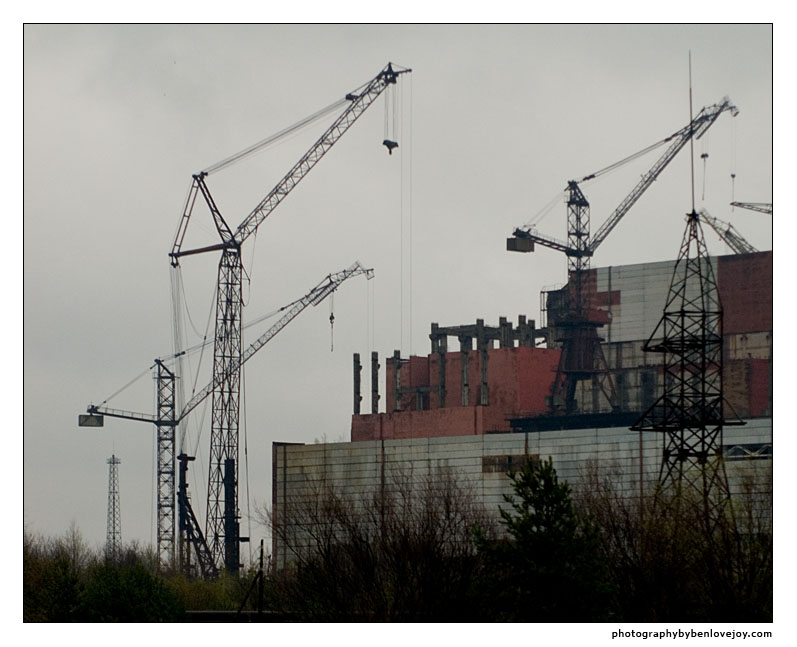
|
We drive on the outer road around the reactors, and as we turn a bend, we see for the first time the grey concrete sarcophagus built around reactor 4. The horizontal yellow gangways provide some sense of scale. |
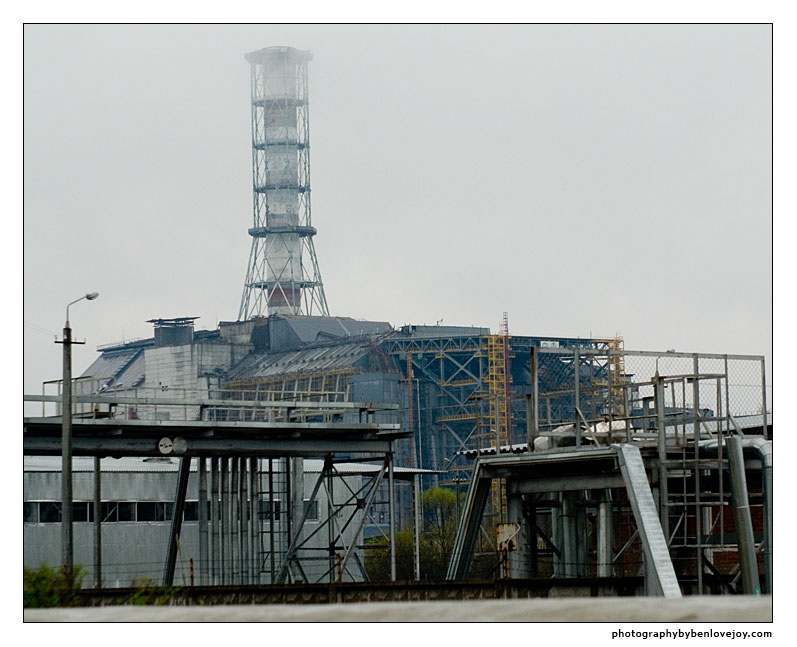
|
We are approximately half a mile from the reactor. We now turn into the inner road and pull up close to the locked gateway at the entrance to the reactor. We get out of the car and walk towards the gate. We are now standing approximately 500 metres from the site of the worst nuclear accident in history. |
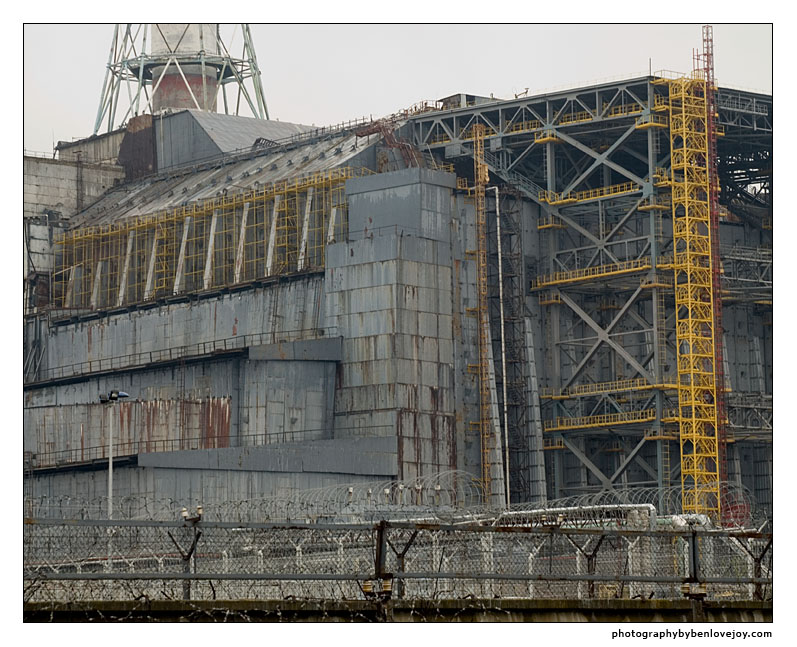
|
(Photographers might like to note that the lens I am using here is no telephoto: it is my trusty 35-70 ...) Outside the gate is a monument constructed to mark the completion of the sarcophagus: |
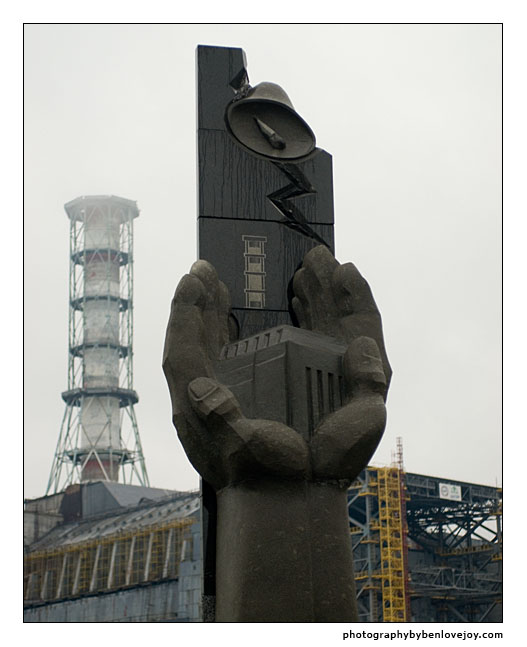
|
We are standing next to this monument to take our photos, and the radiation level is 4.53 = 22.65uSV/hr (x64 London). |
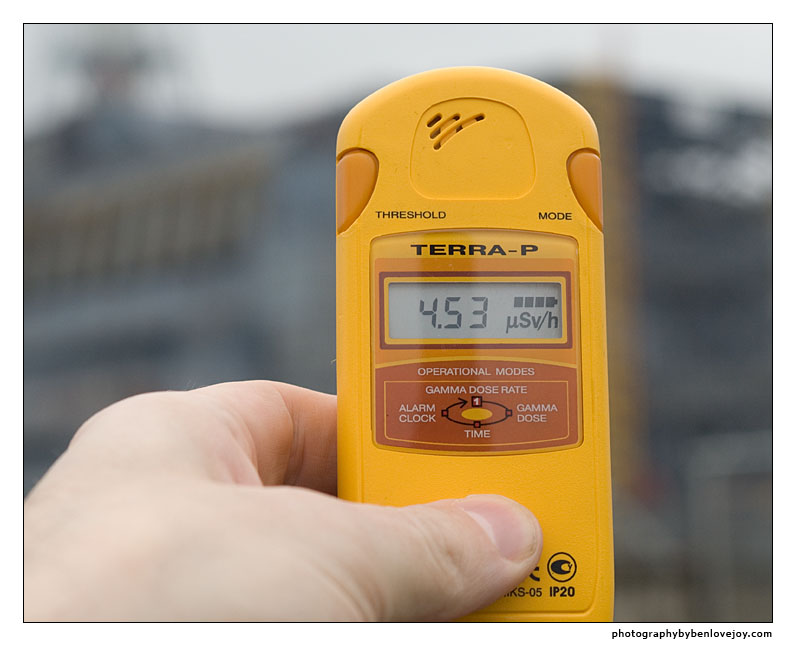
|
I receive a very practical reminder of the inverse square law when I walk towards the gate. I have not gone more than 10-12 feet beyond the monument when the geiger-counter alarm goes off and the reading has jumped to 5.7 = 28.5uSv/hr. Yuri calls me back, and I don't need to be told twice. We then leave the reactor site to drive the two miles into the ghost-town of Prypiat. Twenty-two years ago, it was a model new town by Soviet standards, with modern housing and far better amenities than most towns in the then-USSR, the sign giving a sense of the pride the Soviets felt in the town: |
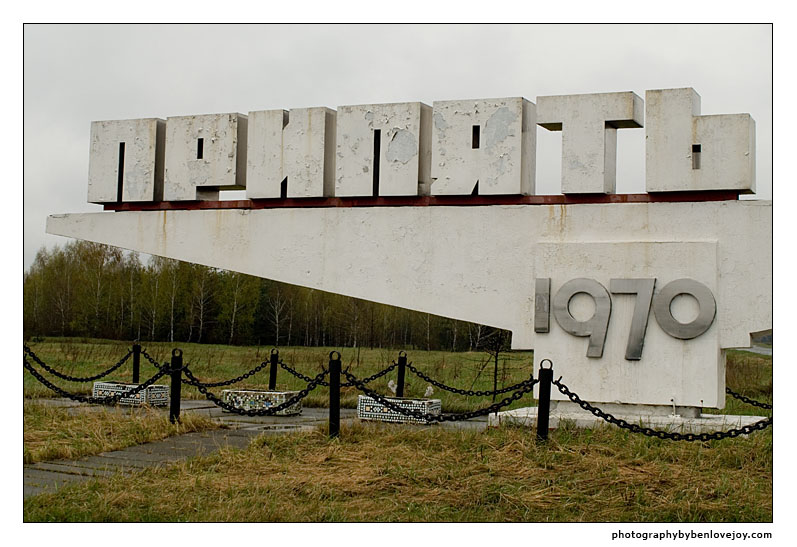
|
Today it is a ghost-town, the entire population of 50,000 evacuated the day after the disaster. On the way, we see a few remaining trees from what was once known as the Red Forest: so-called because the radiation killed the foliage and bark, revealing the bare wood beneath: |
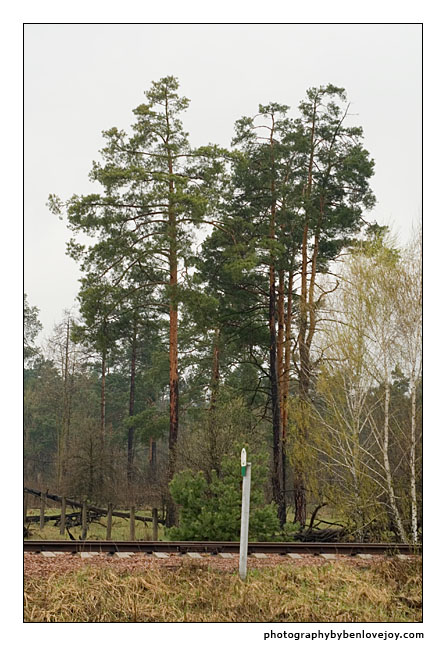
|
On our return from the town, we would drive right through the centre of where the forest used to be. The road into Prypiat: |
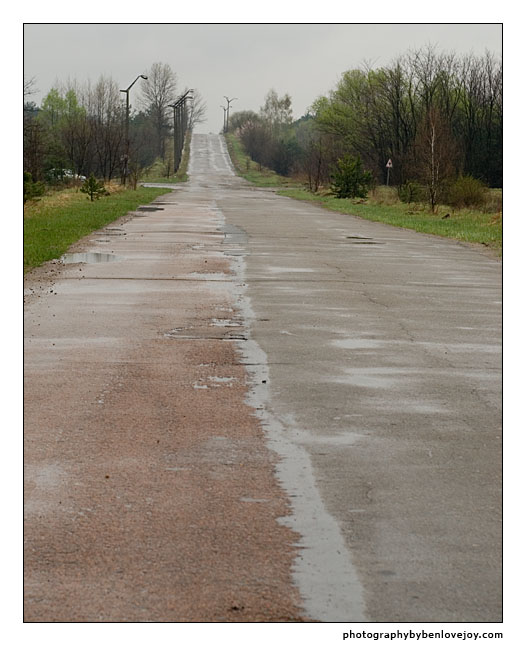
|
We arrive at what was once the car-park for the town square. Now we are the only car parked there. Someone has left a fresh wreath: |
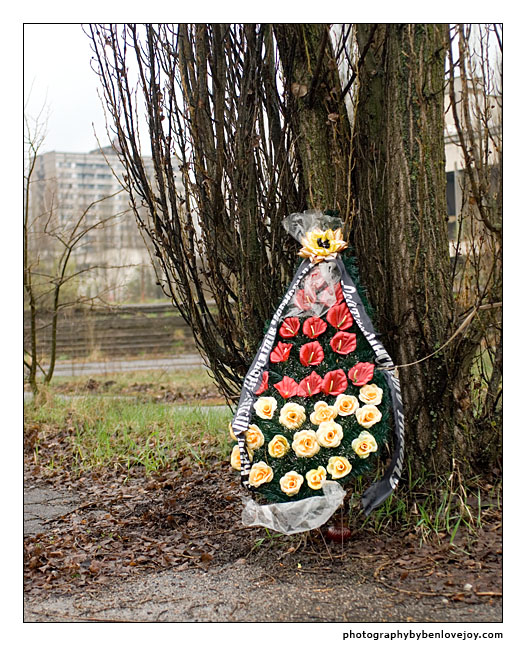
|
The town square seen from the top floor of a hotel (photo taken towards the end of our visit): |
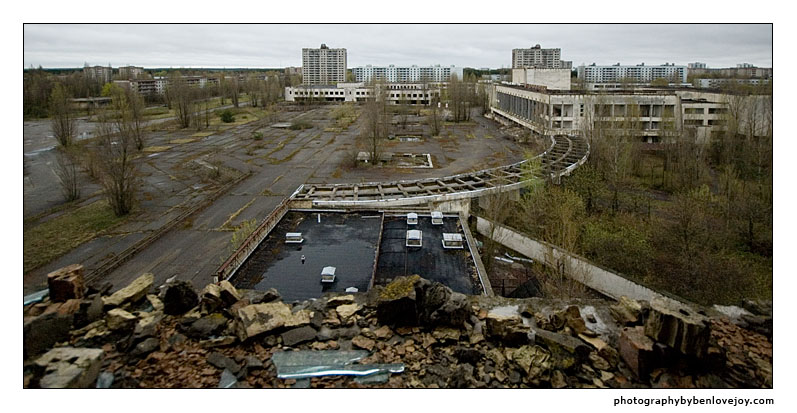
|
We walk across the square towards what was once the pride of the town: a sports & cultural centre: |
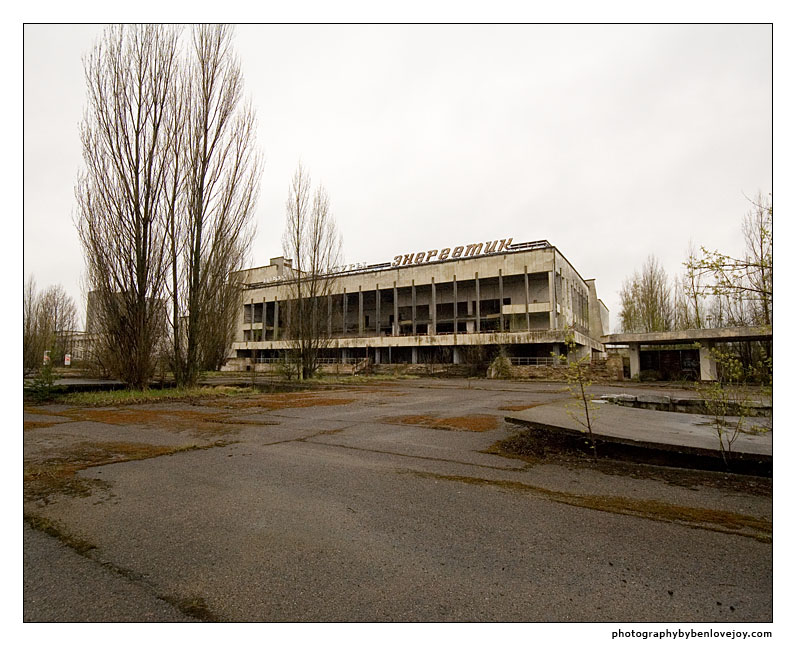
|
We walk inside. |
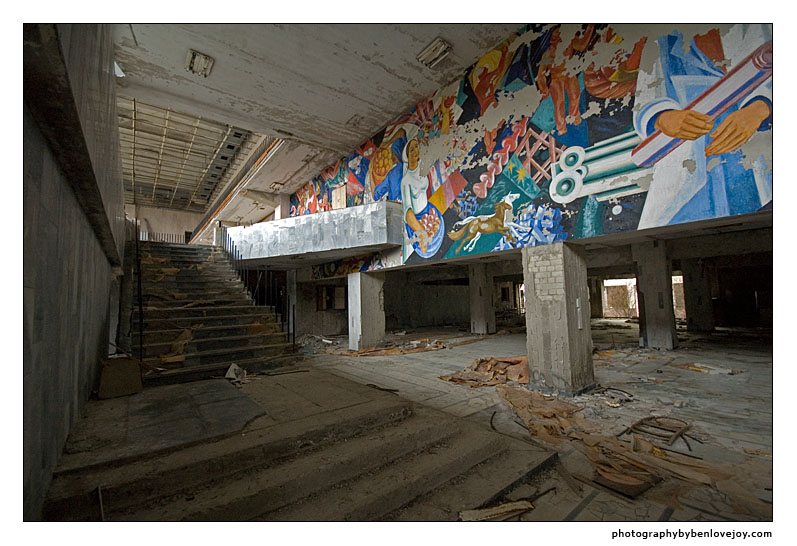
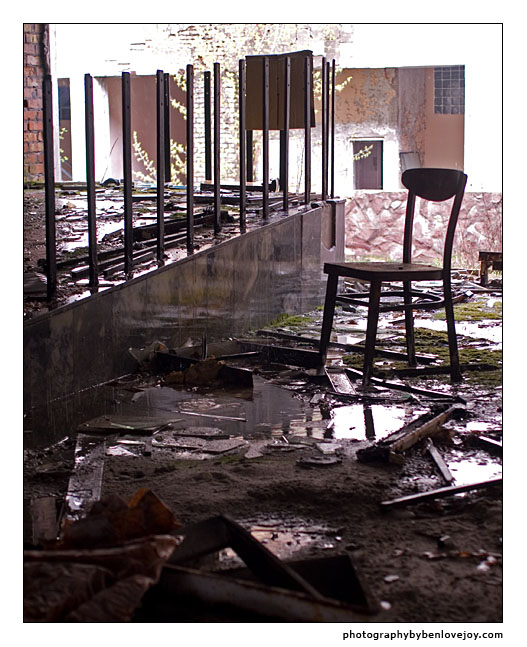
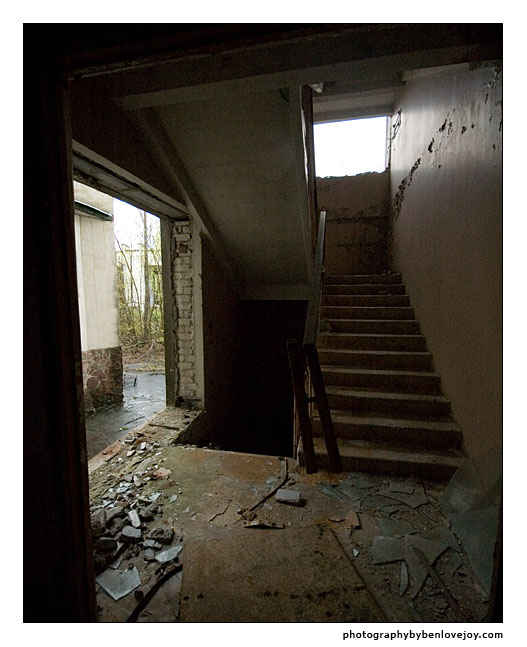
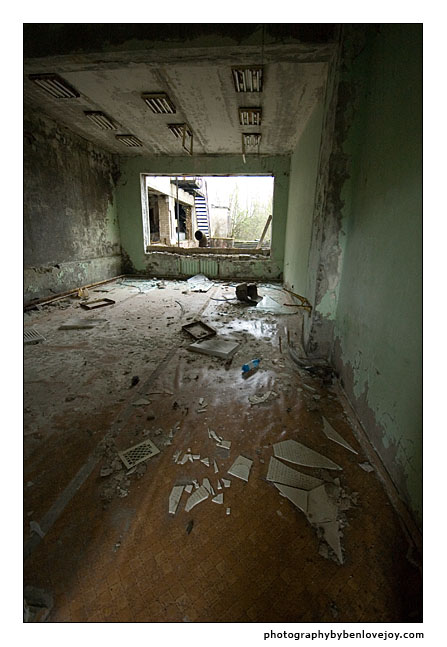
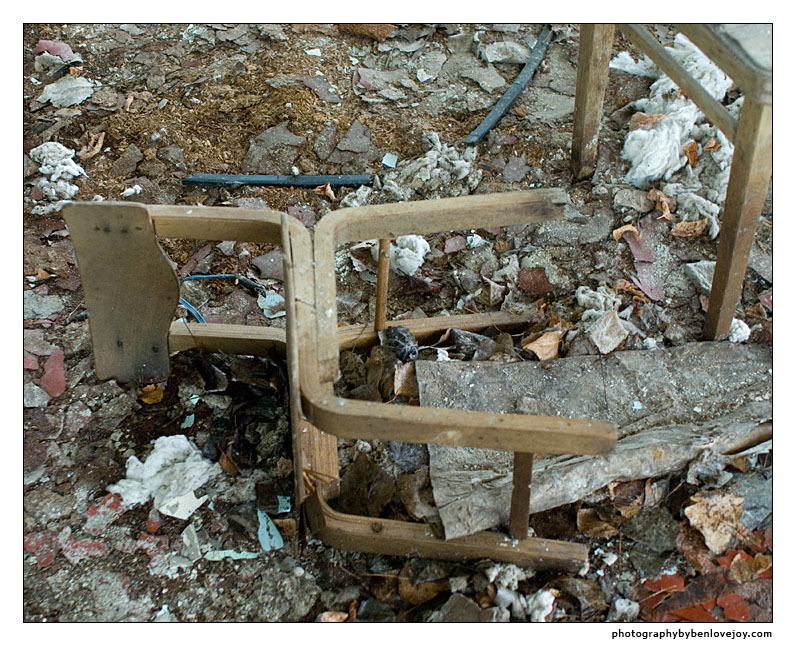
|
I ask Yuri what had caused so much destruction. Twenty-two years of weathering and neglect would cause some of it, but the interiors are largely gutted, with rubble and rubbish everywhere. There are, he tells us, five reasons. First, some time after the evacuation, families were allowed back briefly to collect furniture and belongings: anything that was not too radioactive and which they could find a means of transporting (transportation was not provided by the government) was removed. Second, when the government moved clean-up workers into Chernobyl, they needed furnishings: much of was taken from Prypiat. Third, looting. The government clamped down hard on it, because the looters did not care what they took, so highly radioactive items would be taken out of the Zone and perhaps sold on to unknowing buyers. Fourth, once radiation levels had dropped somewhat, the government awarded contracts to a number of scrap metal companies to salvage all the metal that fell below a certain radiation threshold. These companies ripped out window frames, tore out piping and so on. Finally, the former residents of Prypiat are allowed to return for one day a year, on or close to the anniversary of the disaster. Among them are teenage kids, some of whom would drink and go through the town smashing whatever they could find. In one room, there is an open door: |
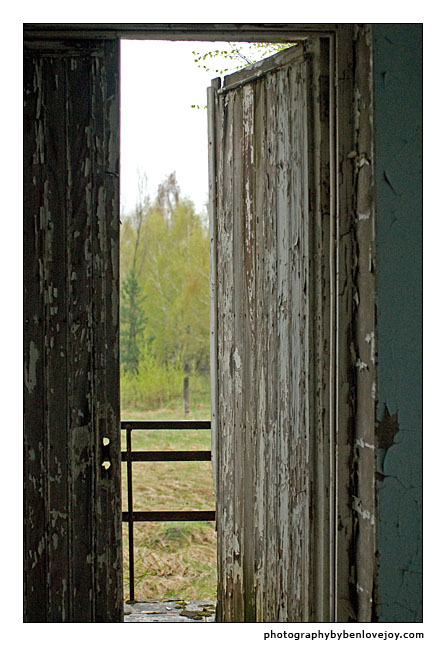
|
Through the doorway can be seen the ferris wheel from the permanent fairground that was to have opened less than a week after the accident: |
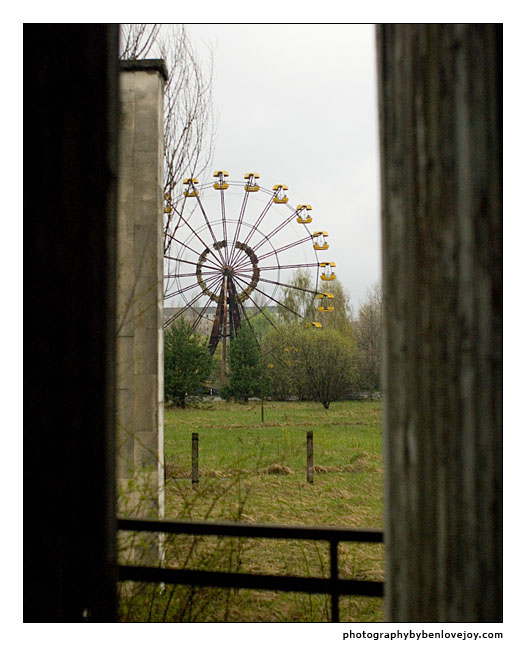
|
We continue through the very large building: |
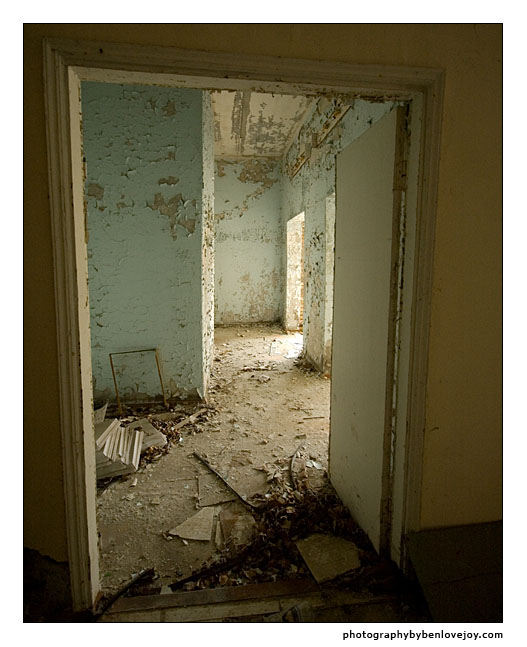
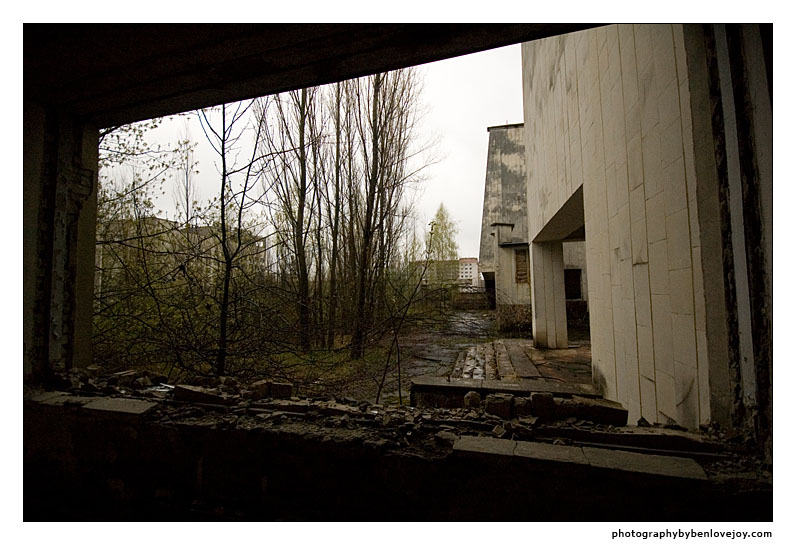
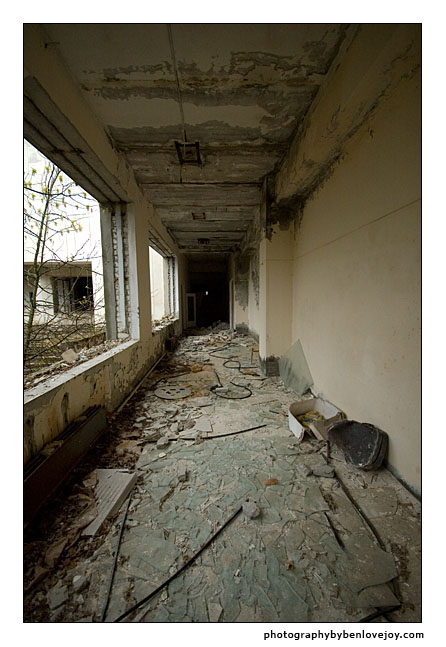
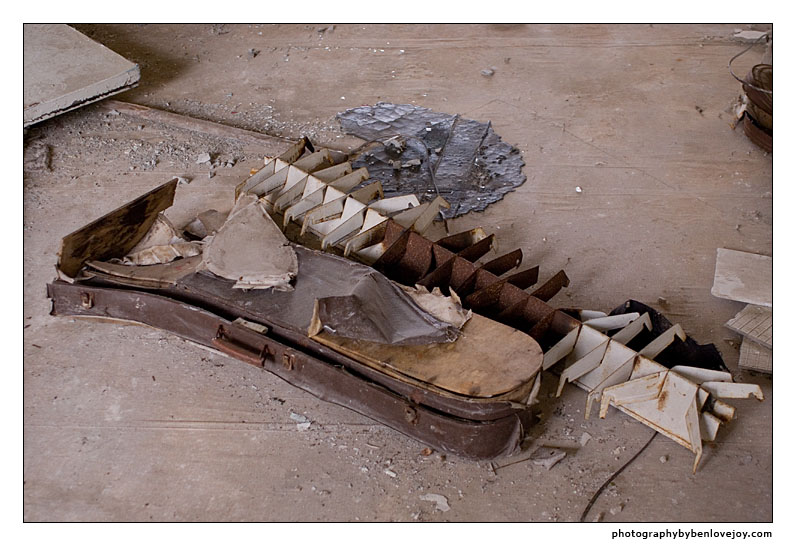
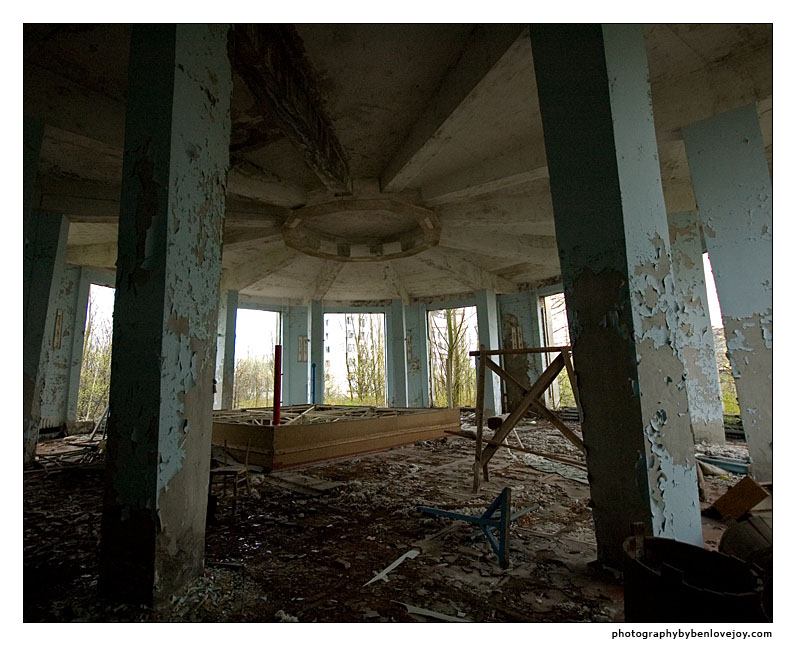
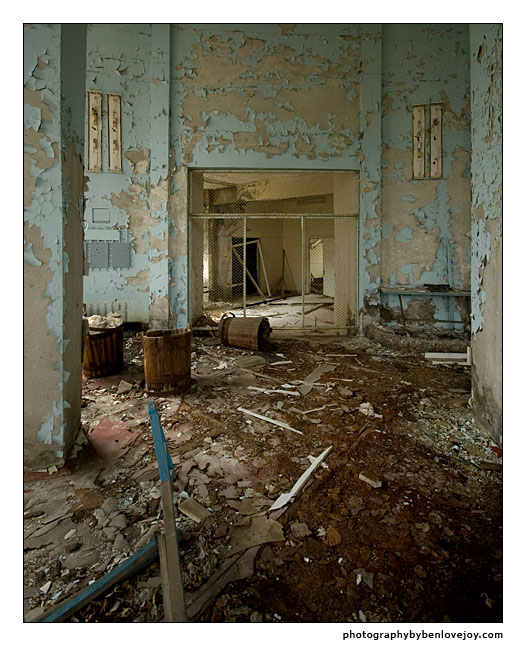
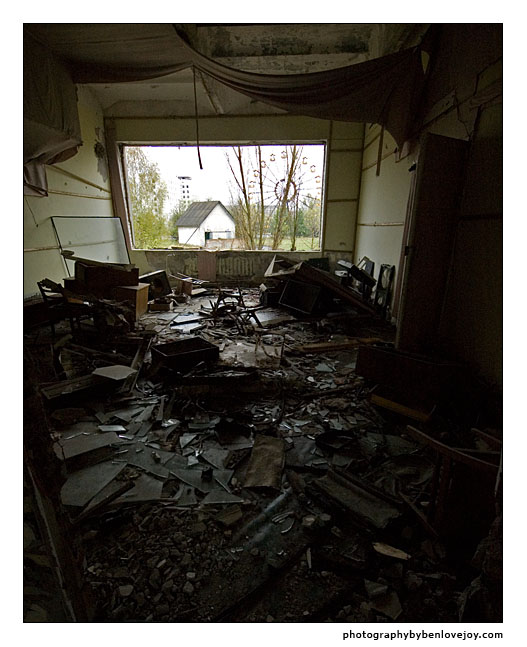
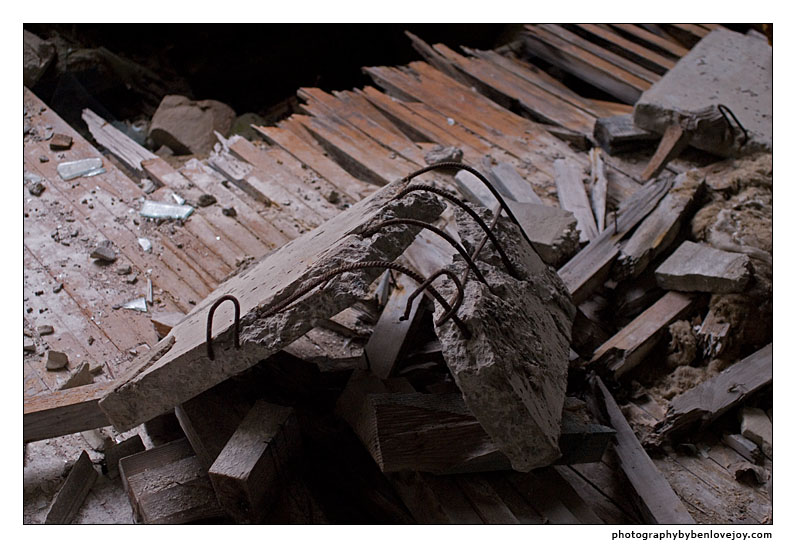
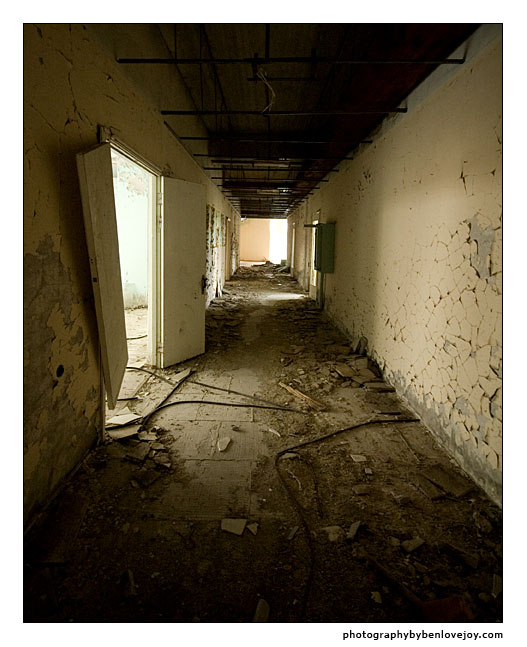
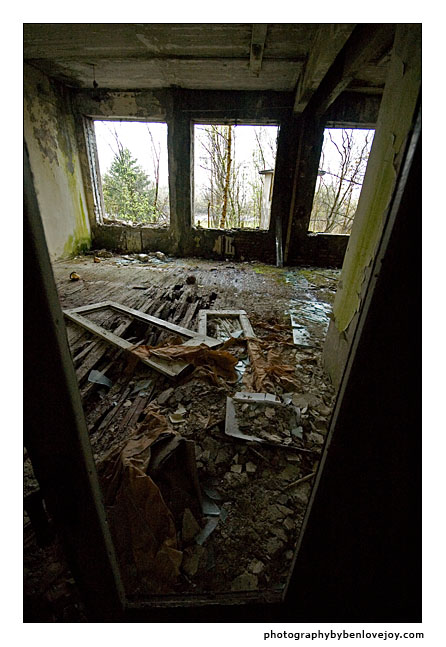
|
It included a swimming pool: |
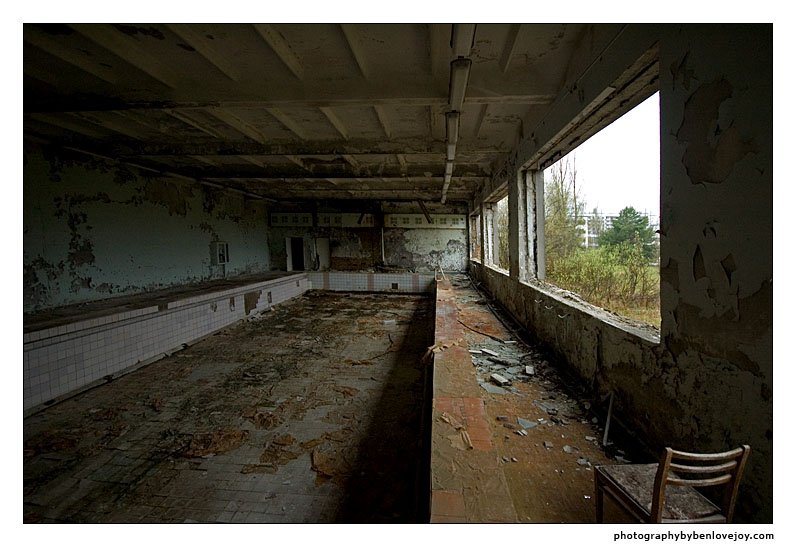
|
And a gymnasium: |
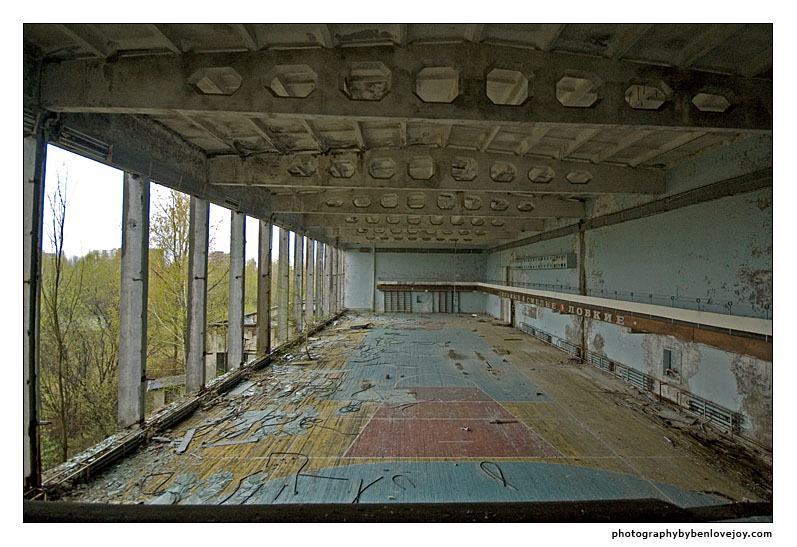
|
Where a tree is growing through the wooden flooring: |
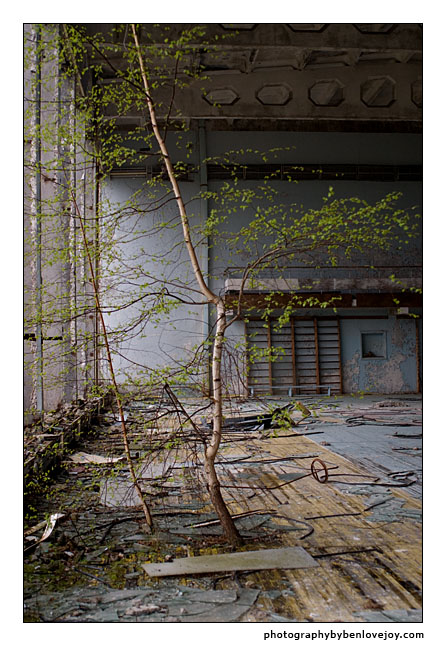
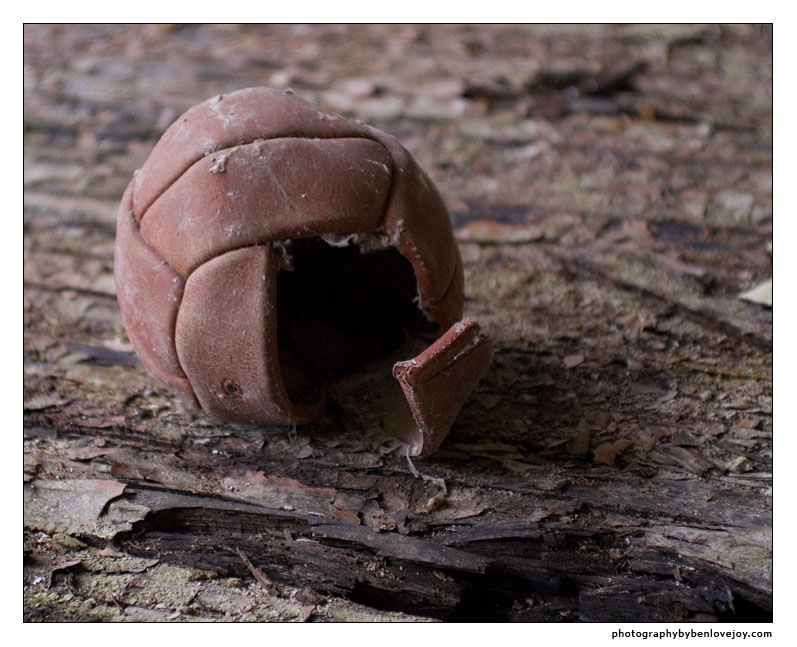
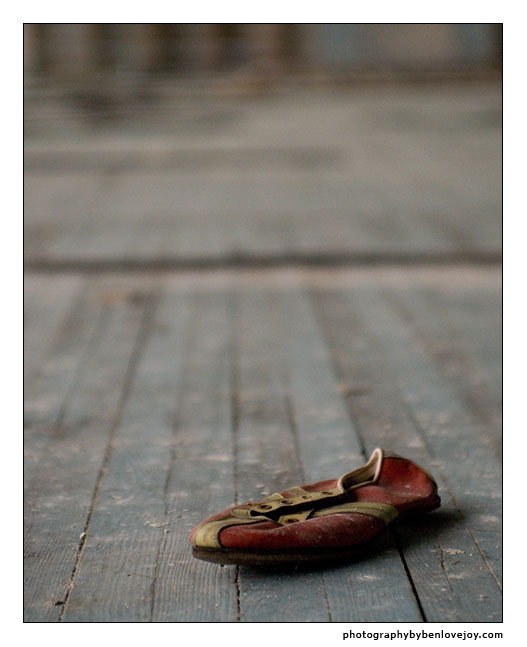
|
I am suspicious of some of the objects we see. Although some look like they might have been 22 years old, and I can see how they might have been just dropped there in the enormous haste of evacuating 50,000 people in just three hours, others look too new, too out of place, too sentimental or just too artistically positioned. |
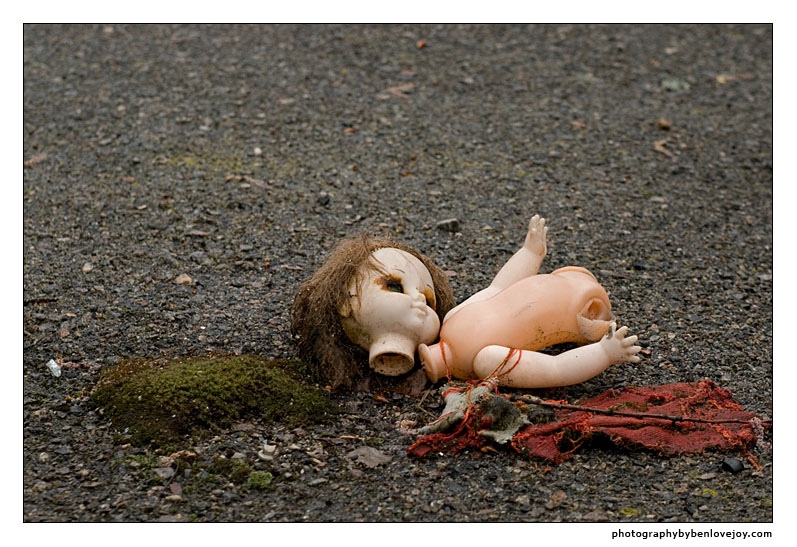
|
But in a sense, it doesn't matter. The evacuation really was that sudden, and things really were abandoned wherever they fell. So while the tour companies may be refreshing certain items, or previous photographers applying a little artistic interpretation to others, the story told by the objects is essentially truthful. We exit the centre at the rear. With most of the radiation now in the soil and the groundwater, it is important to walk on the pathways and not on the grass. |
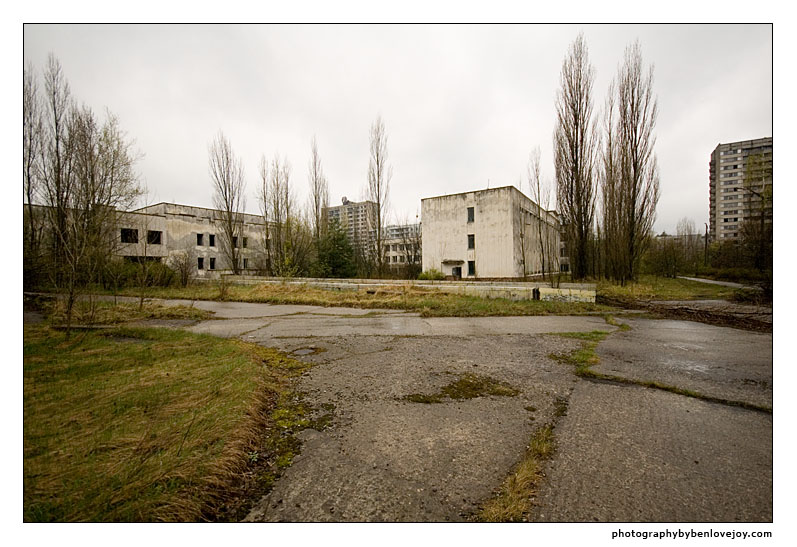
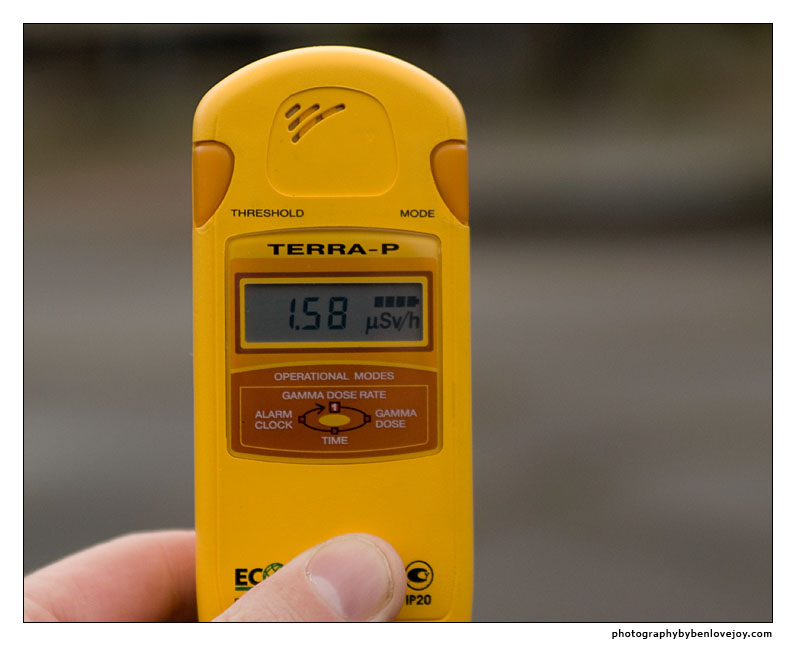
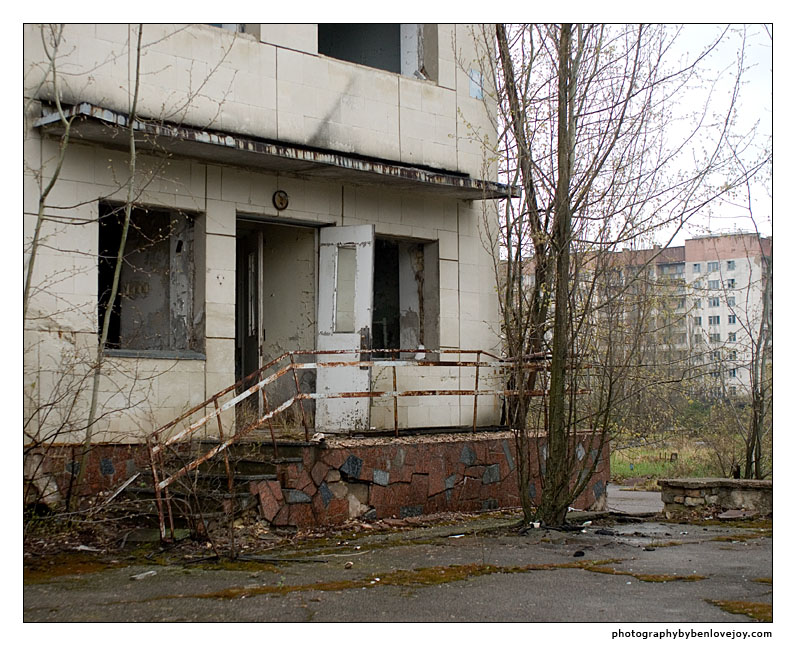
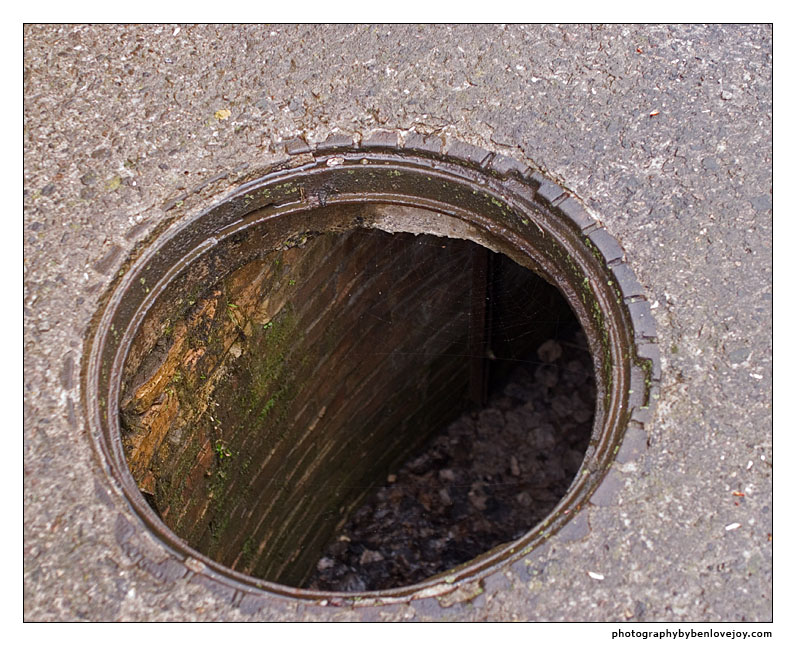
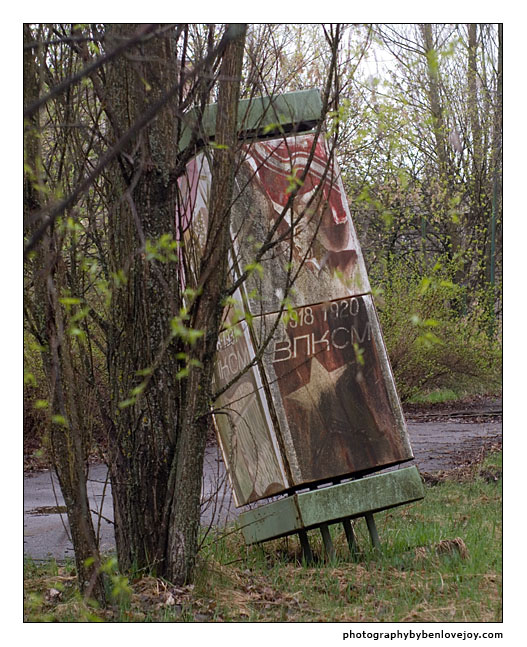
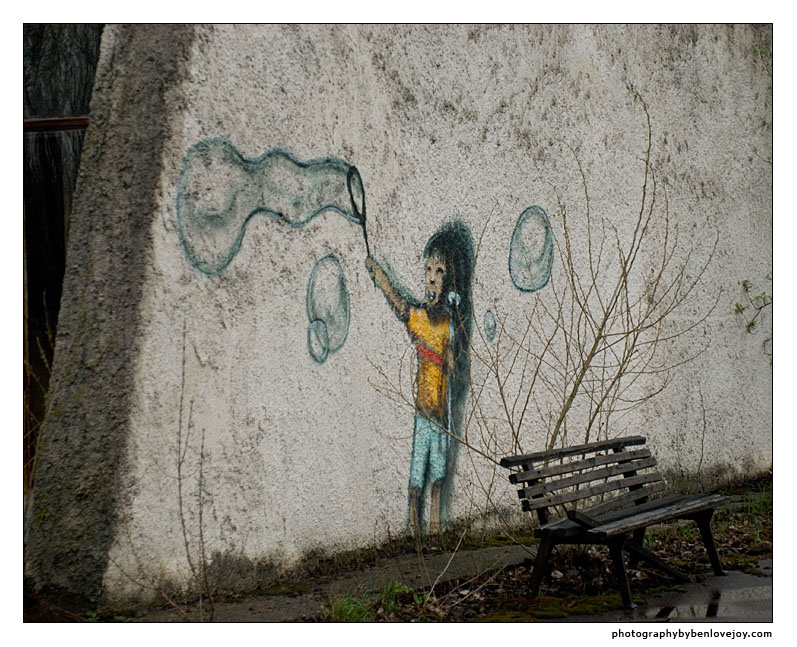
|
Most of the adult population of Prypiat worked at the power station. They were valued by the then-USSR, and the town was unusually well-off in terms of entertainment. A permanent fairground for the children of the workers was constructed, and was due to open on the 1st of May. When the 1st of May arrived, there was silence in place of music, and emptiness in place of crowds. |
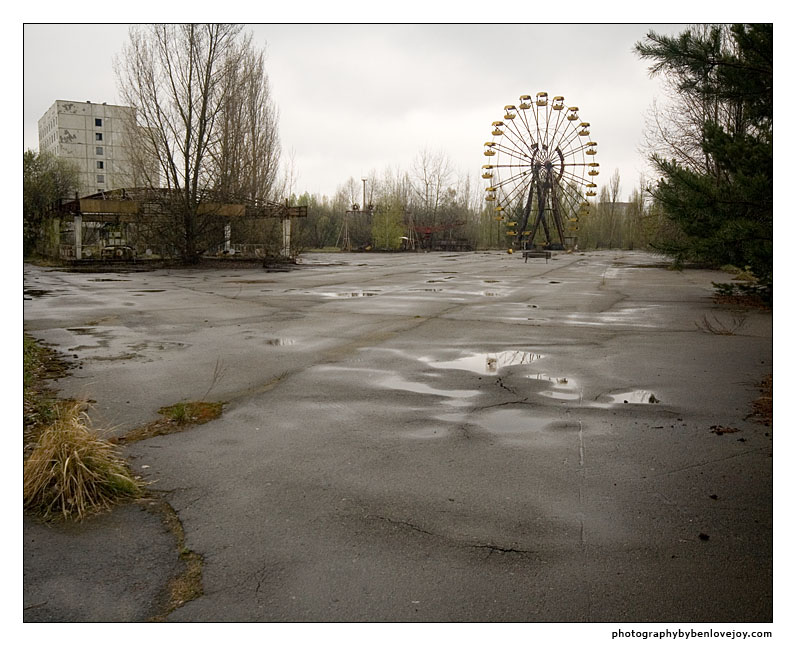
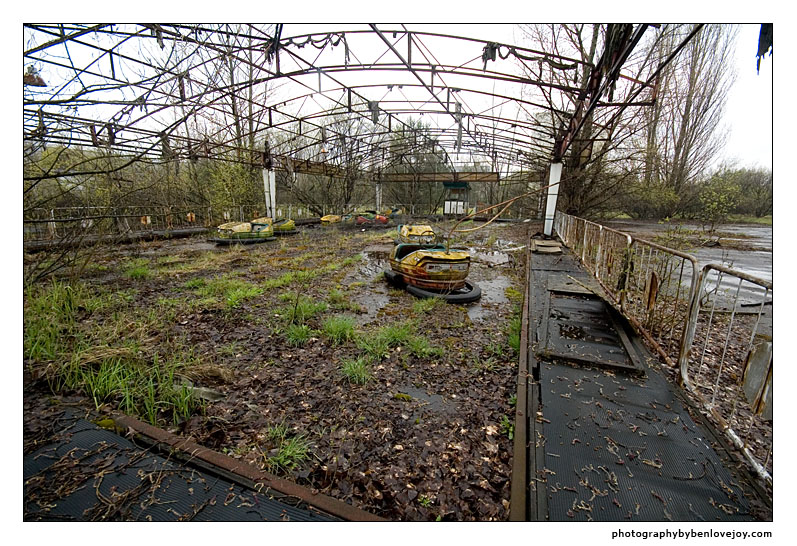
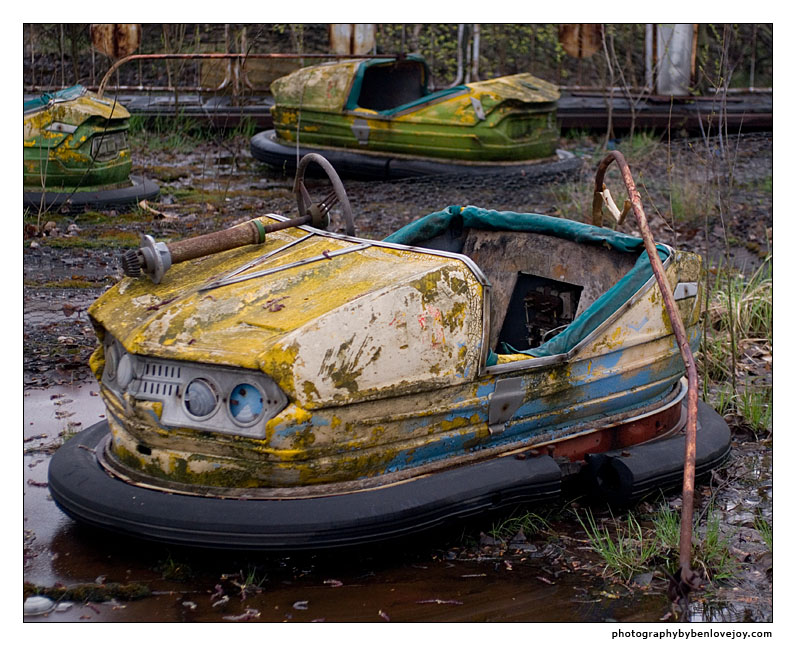
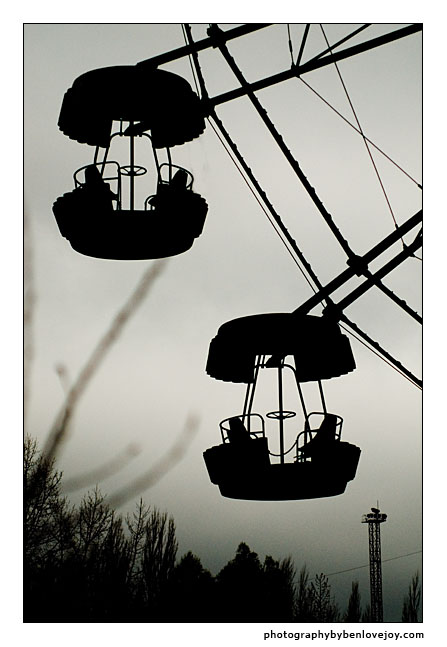
|
The guides are essential when entering buildings: some are safe to walk through, others are still extremely radioactive. This was a store-room for the theatre: |
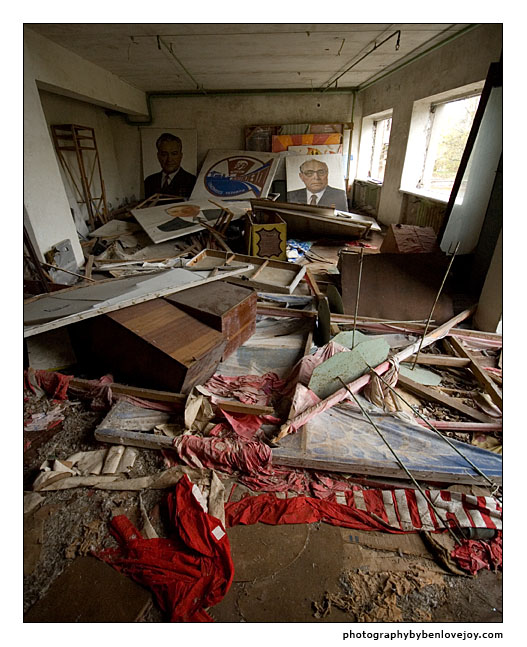
|
Our next visit is to a school. As with most of the town, the open spaces have been largely claimed by trees. |
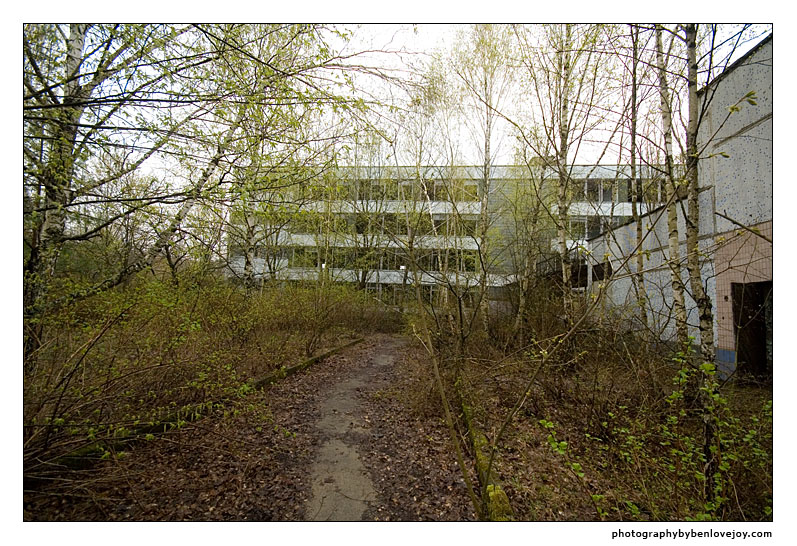
|
Birdsong is loud throughout the town, and we can hear the rustling of animals everywhere: wildlife levels are not only back to pre-accident levels, but beyond. The habitat is now theirs alone. Environmentalists may talk of the risks posed to nature by man-made disasters, but the evidence from Prypiat is that nature does just fine, thanks - it's only the humans who have to worry. |
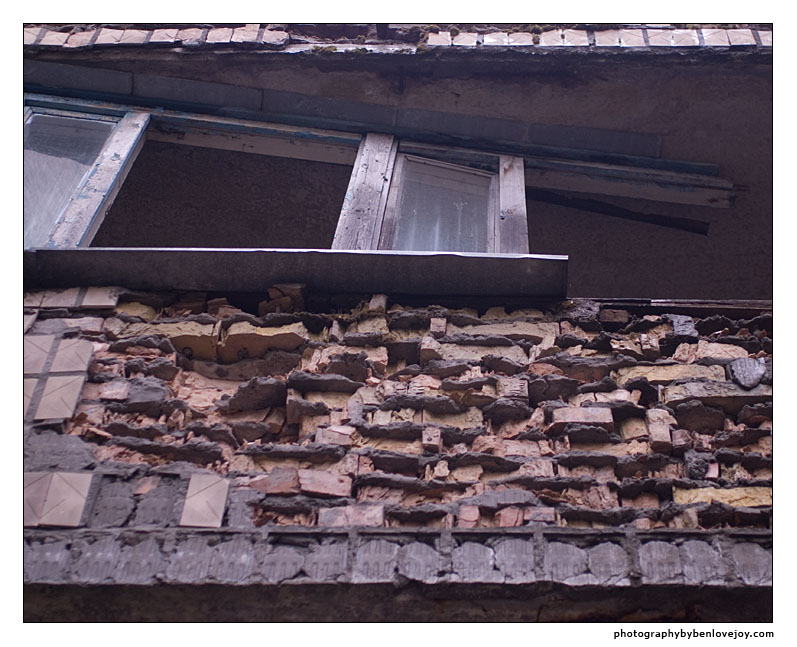
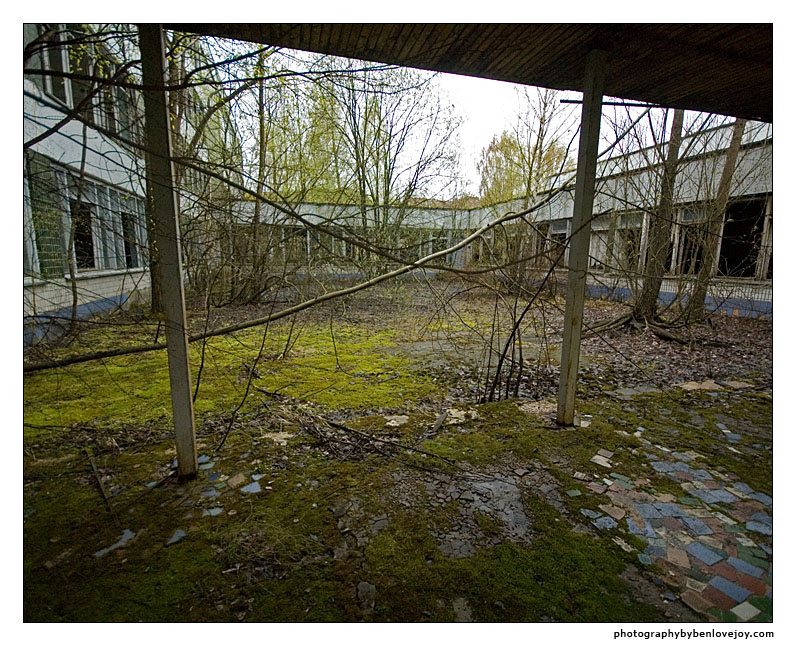
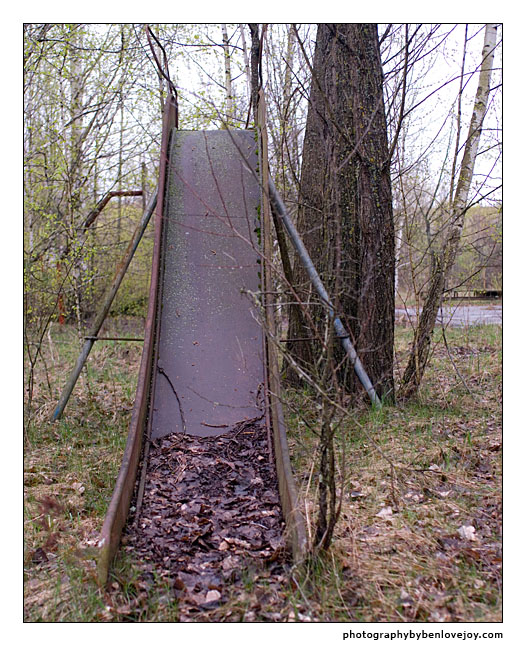
|
We enter the school. |
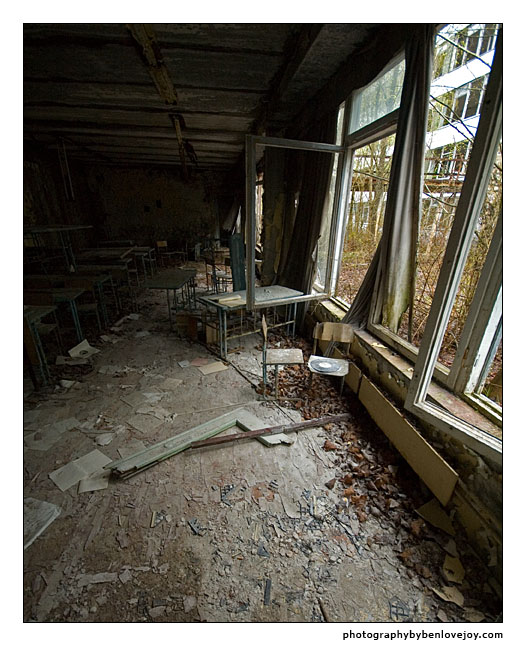
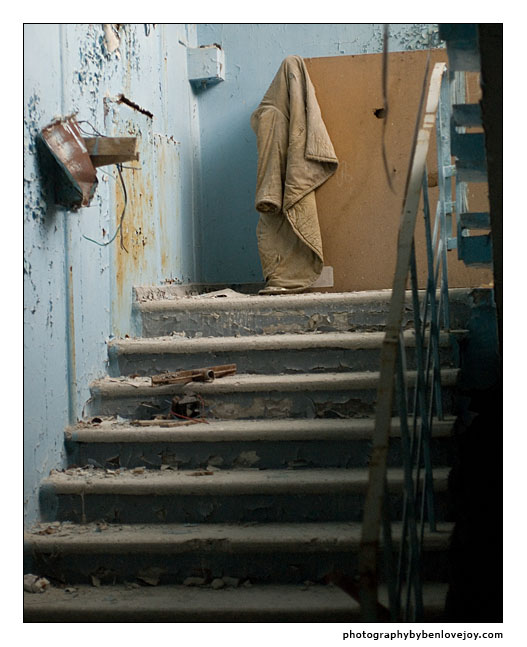
|
Either looters or the scrap metal companies have taken even the metal hooks from the school cloakroom: |
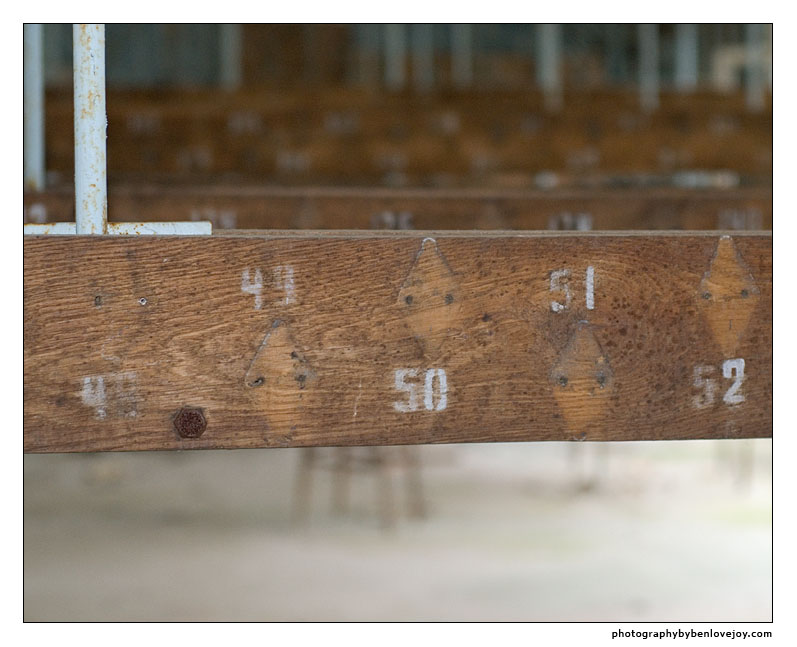
|
More strategic positioning, methinks - a page of a rather new-looking book blowing in the wind: |
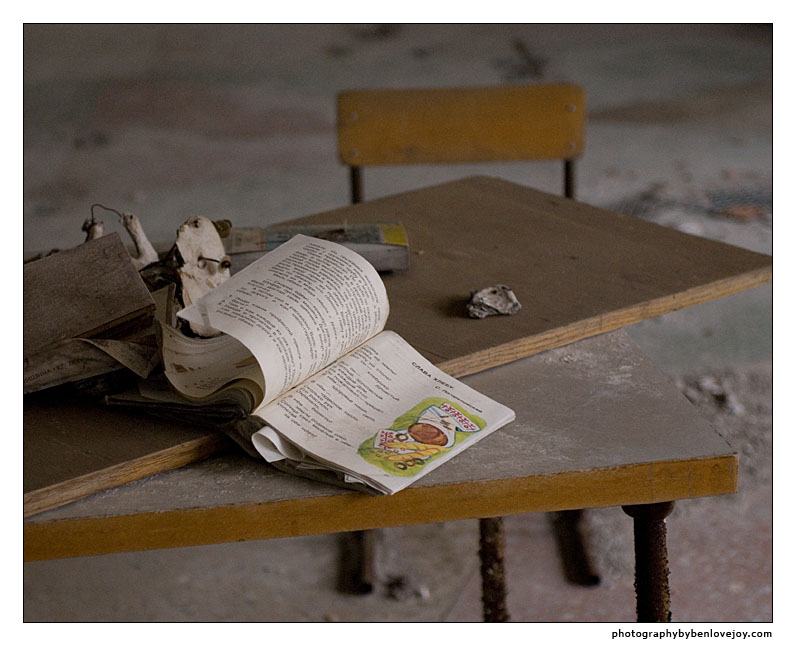
|
This one looks a little more plausible: |
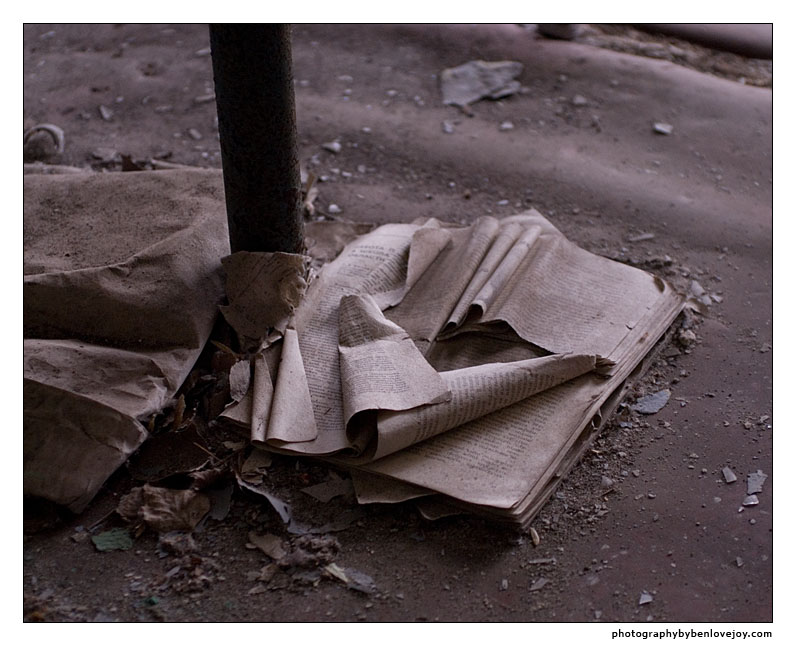
|
The library, at least, is real - even if a few late donations have been made to add a splash of colour in the foreground: |
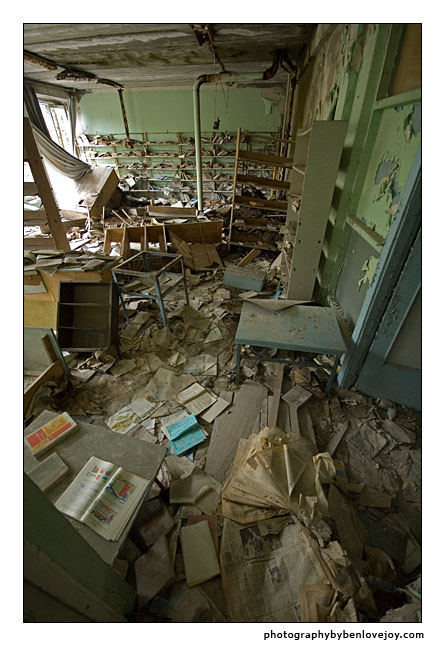
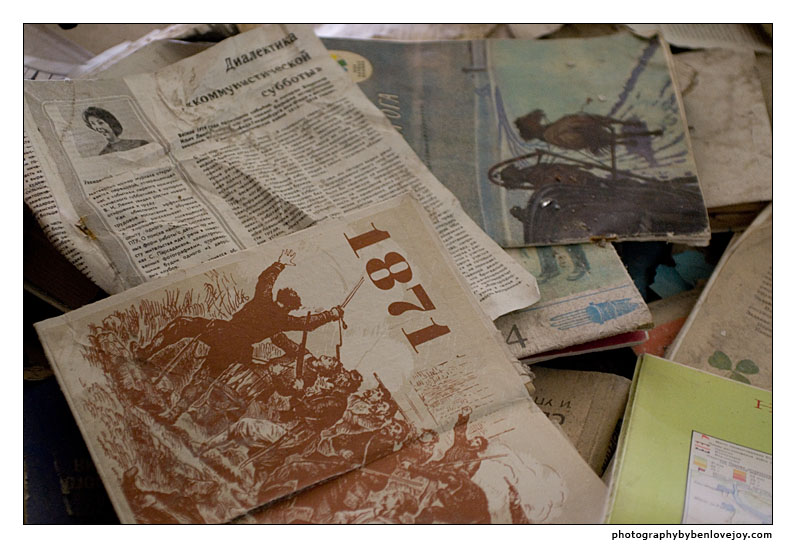
|
A craftroom: |
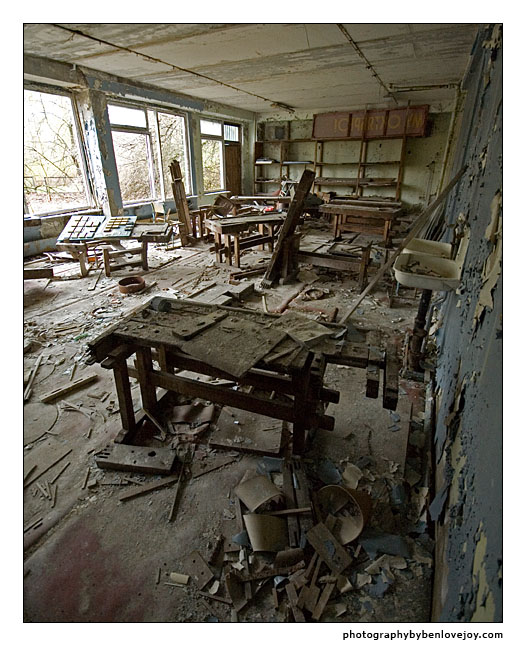
|
Music room: |
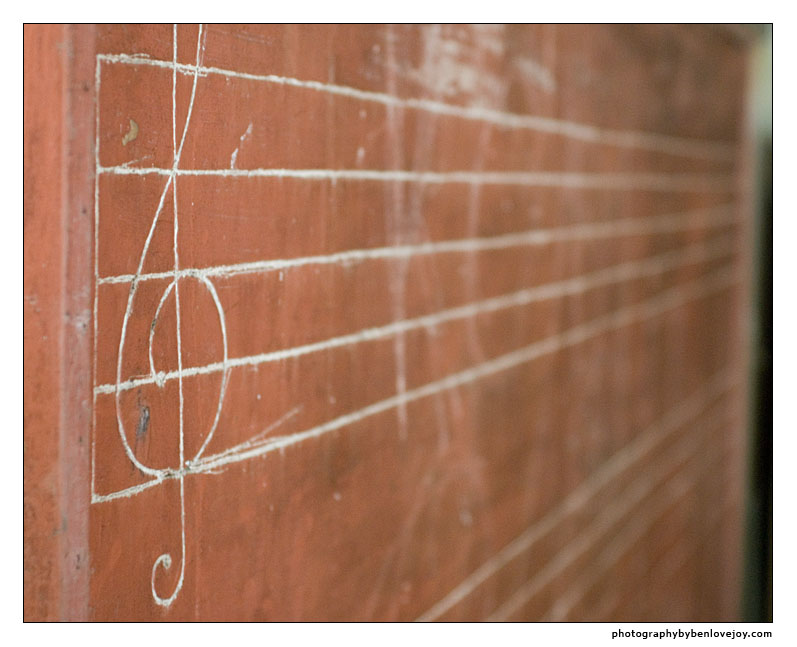
|
Gym: |
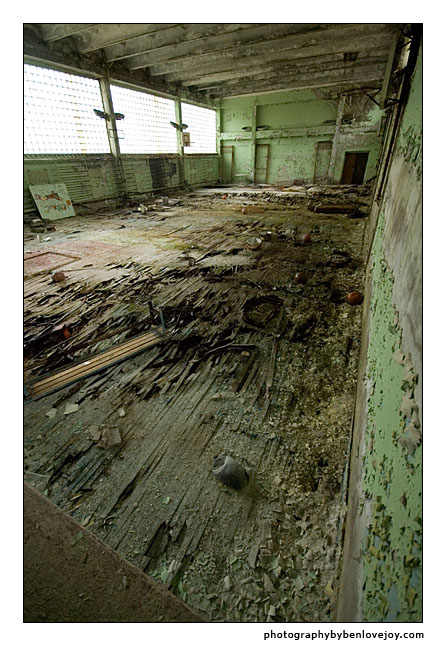
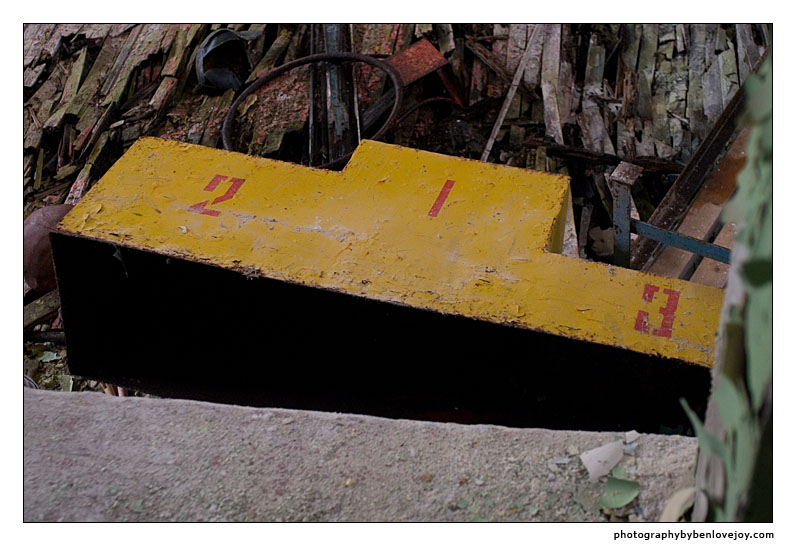
|
Someone from the props department has been getting a little too carried away here: |
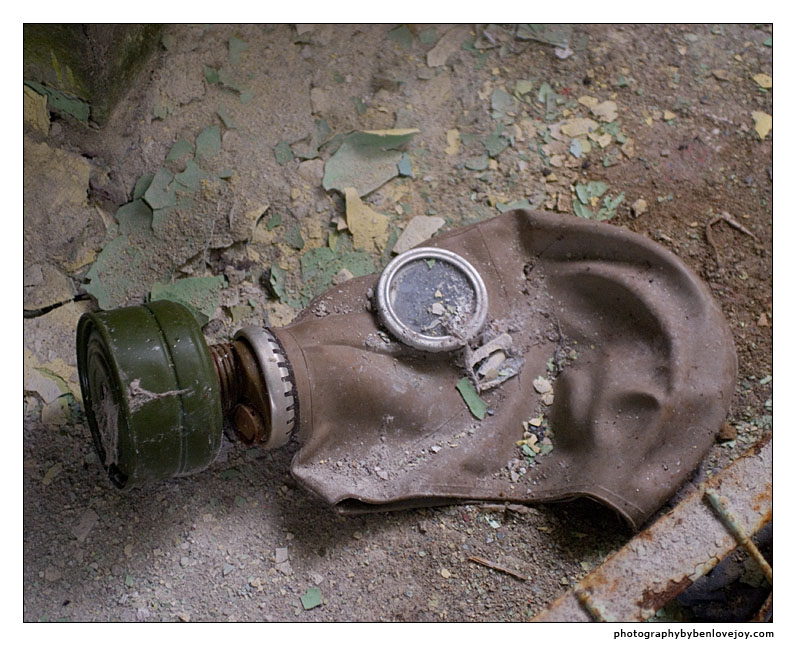
|
We are taken to see an Olympic-sized swimming-pool: |
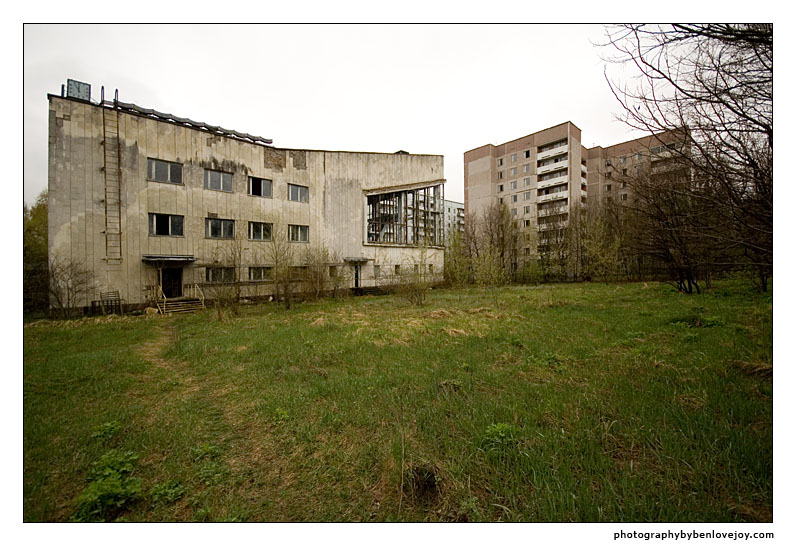
|
By this time, Yuri has either seen that we are being careful and can be trusted, or is desperate for a nicotine fix, as he shows us into the building and then goes back to have a cigarette by the car. We explore the building alone. |
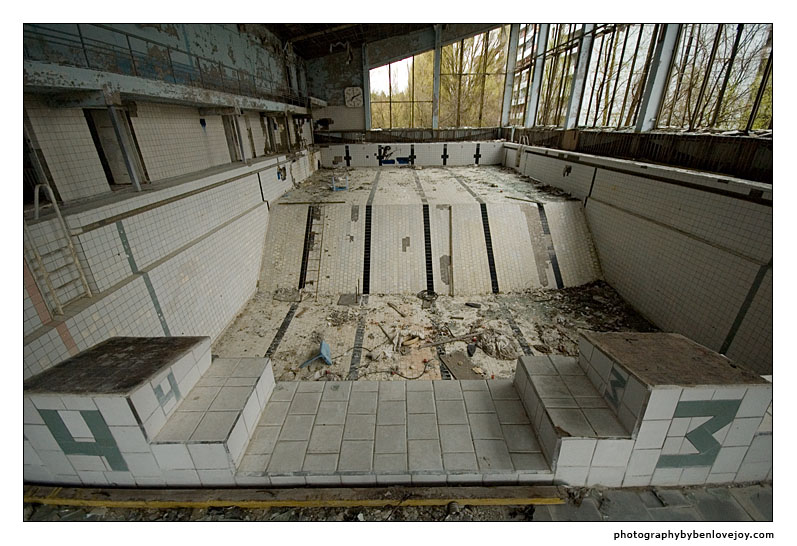
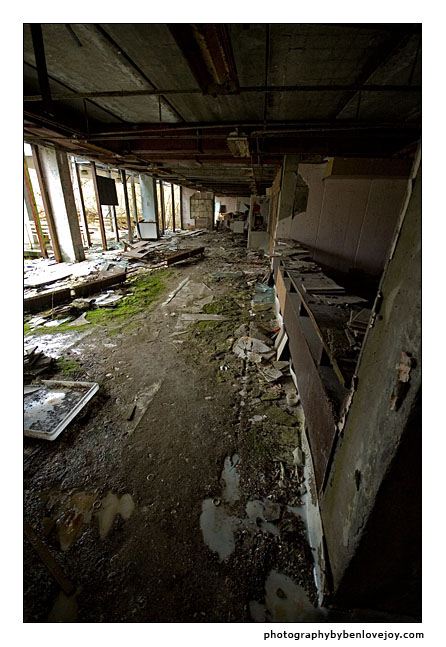
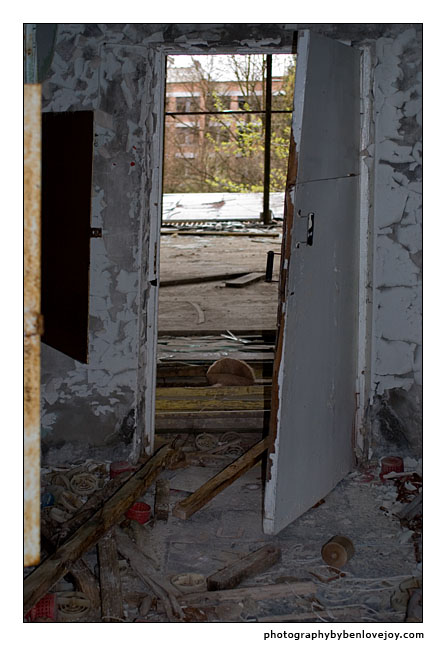
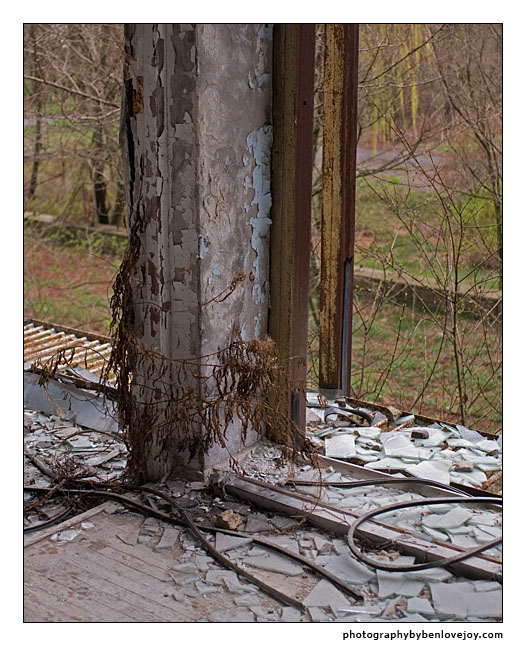
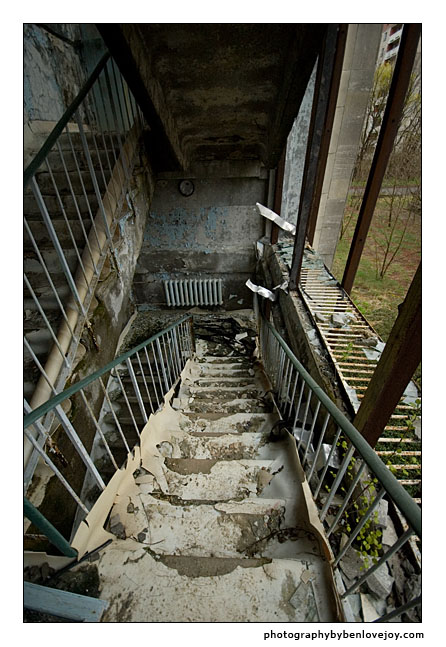
|
This boat station would once have been full of romantic couples and families with kids going for a cruise up the river. |
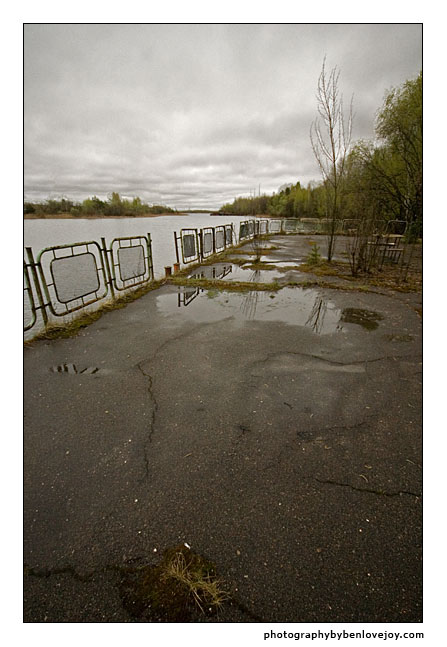
|
Not today: 2.72 = 13.6uSv/hr (x39 London): |
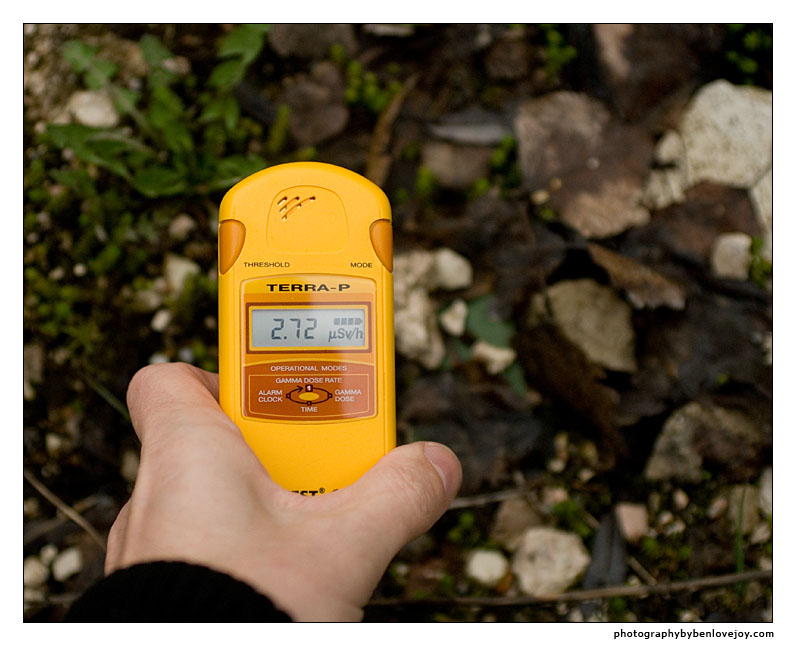
|
The need for a knowledgeable guide is reinforced by this fairly innocent-looking scene: an old crane claw quietly rusting away in a corner. |
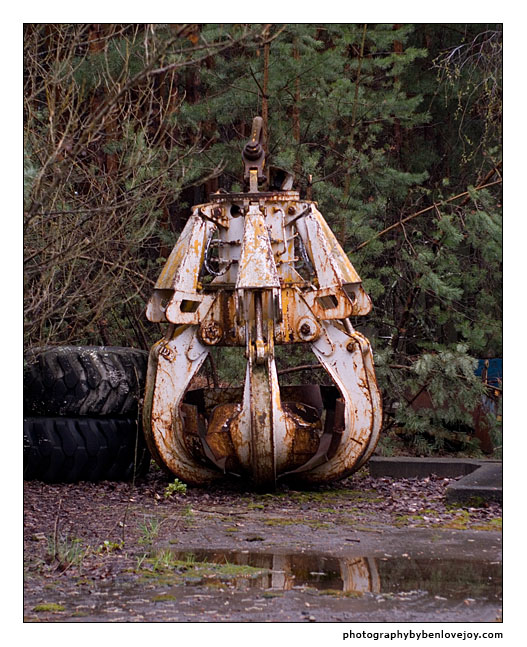
|
The claw had been used to clear rubble from reactor 4 during the construction of the sarcophagus: |
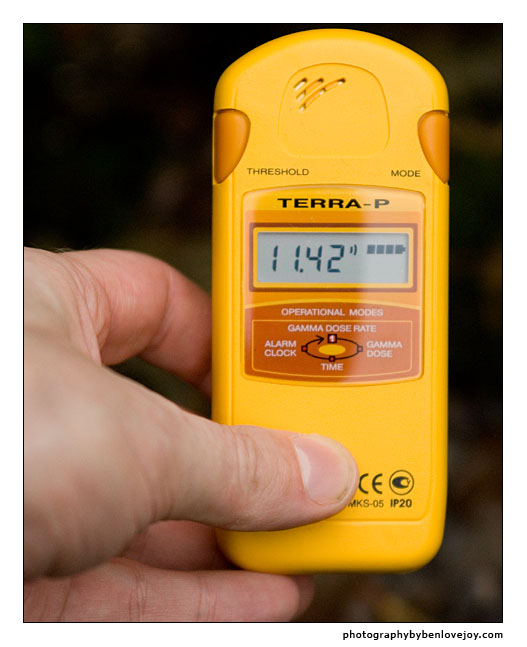
|
= 57.1uSv/hr (x163 London), the highest reading we will see. We don't hang around here. Finally, we are invited to climb the stairs to the top of the hotel. |
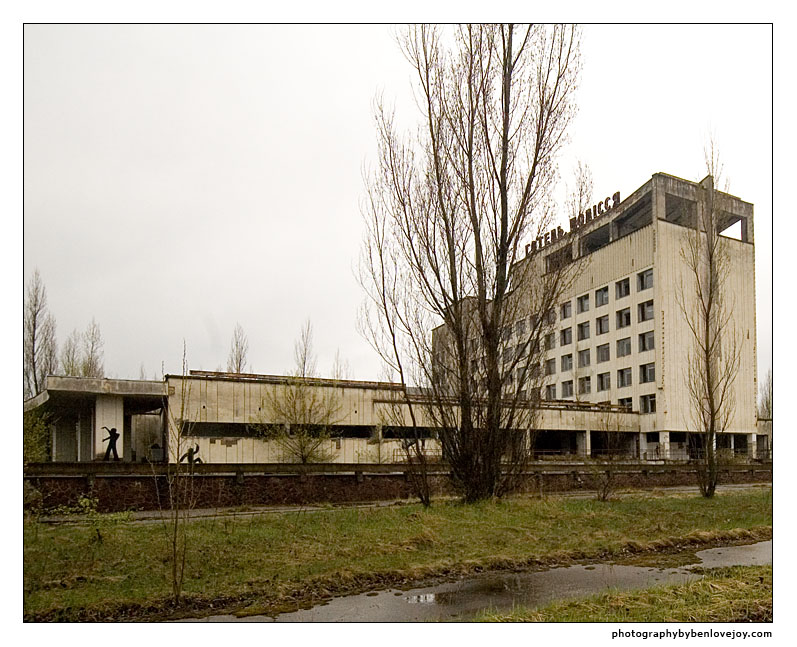
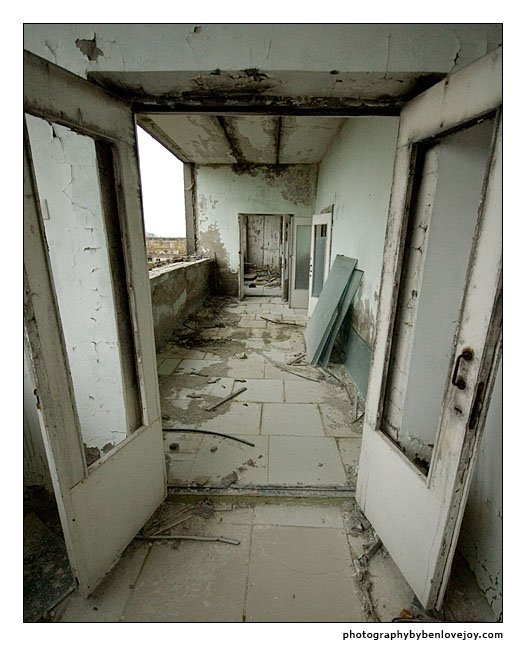
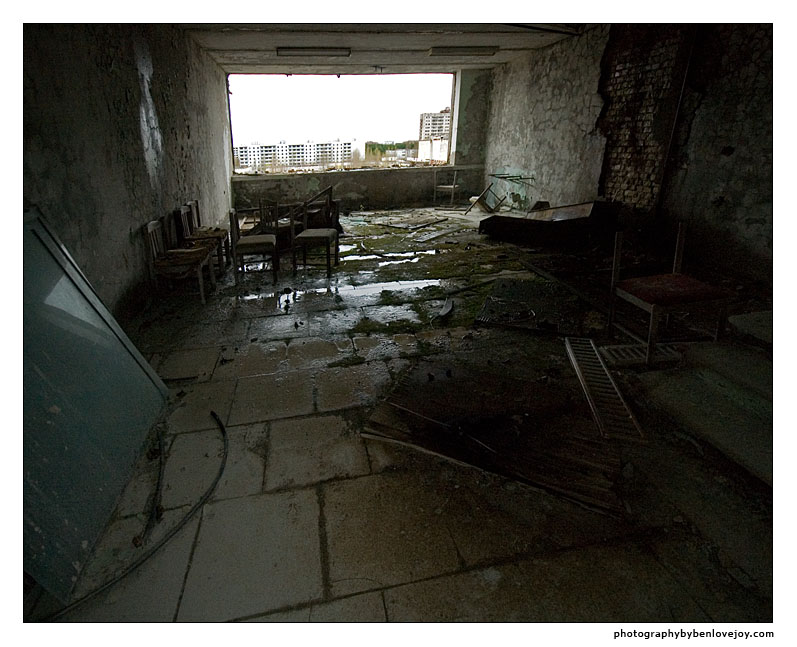

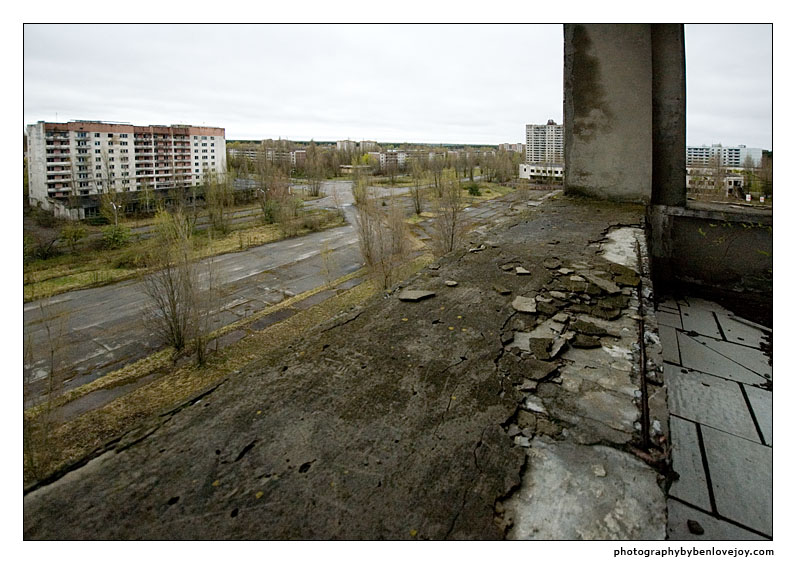
|
We have walked through just a small area of what was once a large town: there is much, much more of the same. We take a different route out of Prypiat, through the centre of the former Red Forest. The wind was blowing to the west, towards Belarus, when the explosion occured, and the most highly radioactive dust was deposited in an area of woodland some distance from the reactor. This is the so-called Plutonium Spike (though the radioactive material is mostly strontium and caesium). Even inside the car, well away from the vegetation, and with the windows closed, the geiger-counter alarm goes off as the reading jumps to 7.74 = 38.7uSv/hr (x110 London). We don't stop. And that completes our visit. We are given two radiation scans on the way out of the Zone. The first is at Chernobyl, where we get the green light from a hand and foot scanner; the second is at the exit to the Zone, where we are required to pass through a full-body scanner identical to the one we had seen in the museum: |
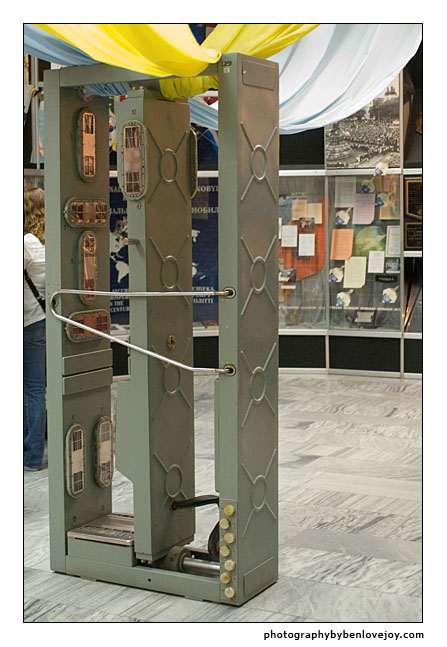
|
When this too gives us each a green light, the barrier is released and we are allowed out. Ironically, being just a few kilometres from the Belarus border (inside the Zone), we have to drive back to Kiev airport to meet up with Liena, a CCP worker who was on her way to the UK, and Sascha, the driver who would be taking us to Gomel. This is a 4.5-hour drive, including what we understand to be a record-speed border-crossing: just 35 minutes from the first to third checkpoint. |
![]()